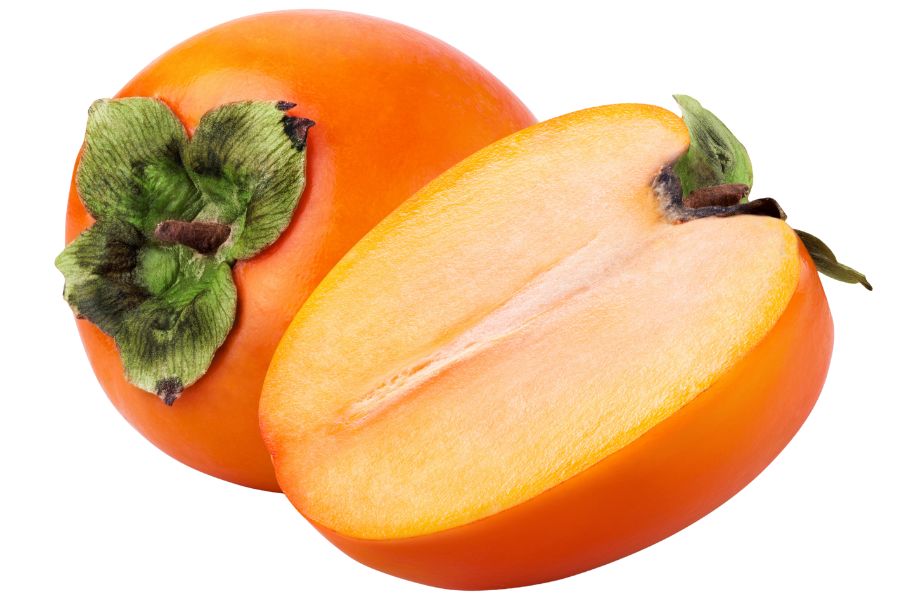There are wild edible plants growing throughout Kansas that you’ve probably seen dozens of times without realizing it. Mulberries and American persimmons are just two that offer sweet, edible fruit when they’re in season. Others don’t look like food at all until you know what you’re seeing.
Some of these plants are low to the ground and delicate, while others grow on trees or spread across sunny fields. Many have multiple edible parts, including leaves, roots, seeds, and even blossoms. Some can be eaten raw, others are better cooked, but all can add something worthwhile to a forager’s haul.
The mix of wild food plants in Kansas includes far more than most people expect. Even a short foraging trip can turn up ingredients for teas, snacks, or entire meals. With a little practice, you’ll start to see just how much is out there waiting to be gathered.
What We Cover In This Article:
- The Edible Plants Found in the State
- Toxic Plants That Look Like Edible Plants
- How to Get the Best Results Foraging
- Where to Find Forageables in the State
- Peak Foraging Seasons
- The extensive local experience and understanding of our team
- Input from multiple local foragers and foraging groups
- The accessibility of the various locations
- Safety and potential hazards when collecting
- Private and public locations
- A desire to include locations for both experienced foragers and those who are just starting out
Using these weights we think we’ve put together the best list out there for just about any forager to be successful!
A Quick Reminder
Before we get into the specifics about where and how to find these plants and mushrooms, we want to be clear that before ingesting any wild plant or mushroom, it should be identified with 100% certainty as edible by someone qualified and experienced in mushroom and plant identification, such as a professional mycologist or an expert forager. Misidentification can lead to serious illness or death.
All plants and mushrooms have the potential to cause severe adverse reactions in certain individuals, even death. If you are consuming wild foragables, it is crucial to cook them thoroughly and properly and only eat a small portion to test for personal tolerance. Some people may have allergies or sensitivities to specific mushrooms and plants, even if they are considered safe for others.
The information provided in this article is for general informational and educational purposes only. Foraging involves inherent risks.
The Edible Plants Found in the State
Wild plants found across the state can add fresh, seasonal ingredients to your meals:
Lamb’s Quarters (Chenopodium album)
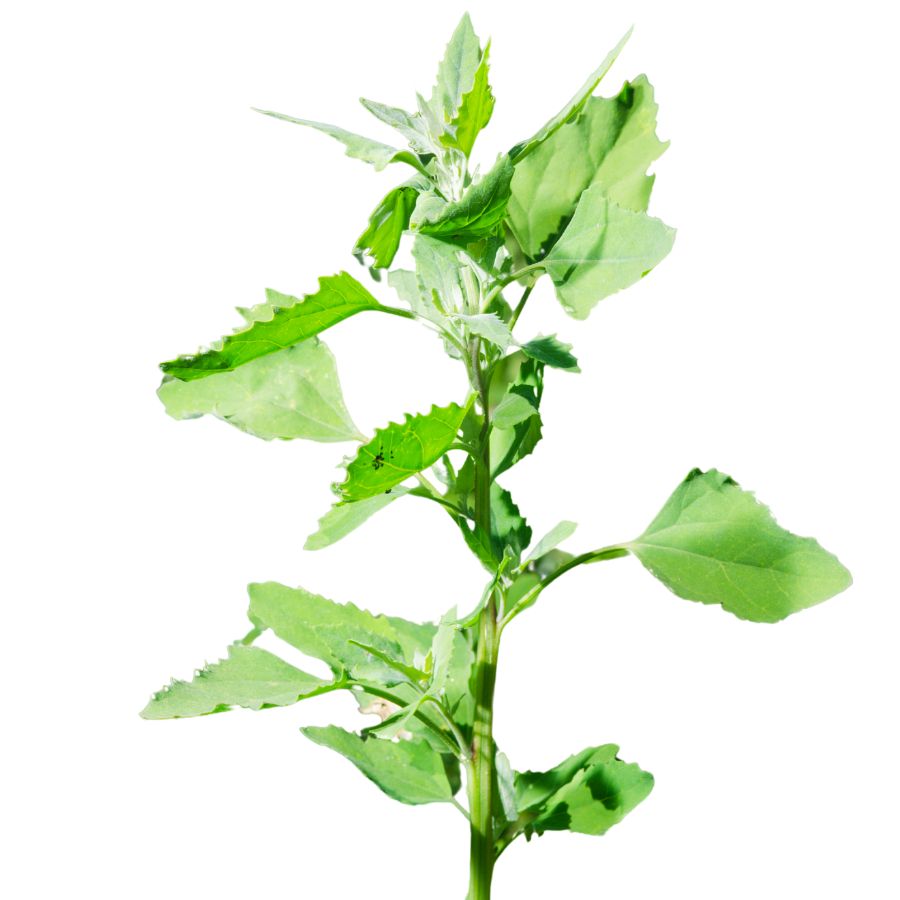
Lamb’s quarters, also called wild spinach and pigweed, has soft green leaves that often look dusted with a white, powdery coating. The leaves are shaped a little like goose feet, with slightly jagged edges and a smooth underside that feels almost velvety when you touch it.
A few plants can be confused with lamb’s quarters, like some types of nightshade, but true lamb’s quarters never have berries and its leaves are usually coated in that distinctive white bloom. Always check that the stems are grooved and not round and smooth like the poisonous lookalikes.
When you taste lamb’s quarters, you will notice it has a mild, slightly nutty flavor that gets richer when cooked. The young leaves, tender stems, and even the seeds are all edible, but you should avoid eating the older stems because they become tough and stringy.
People often sauté lamb’s quarters like spinach, blend it into smoothies, or dry the leaves for later use in soups and stews. It is also rich in oxalates, so you will want to cook it before eating large amounts to avoid any problems.
Jerusalem Artichoke (Helianthus tuberosus)
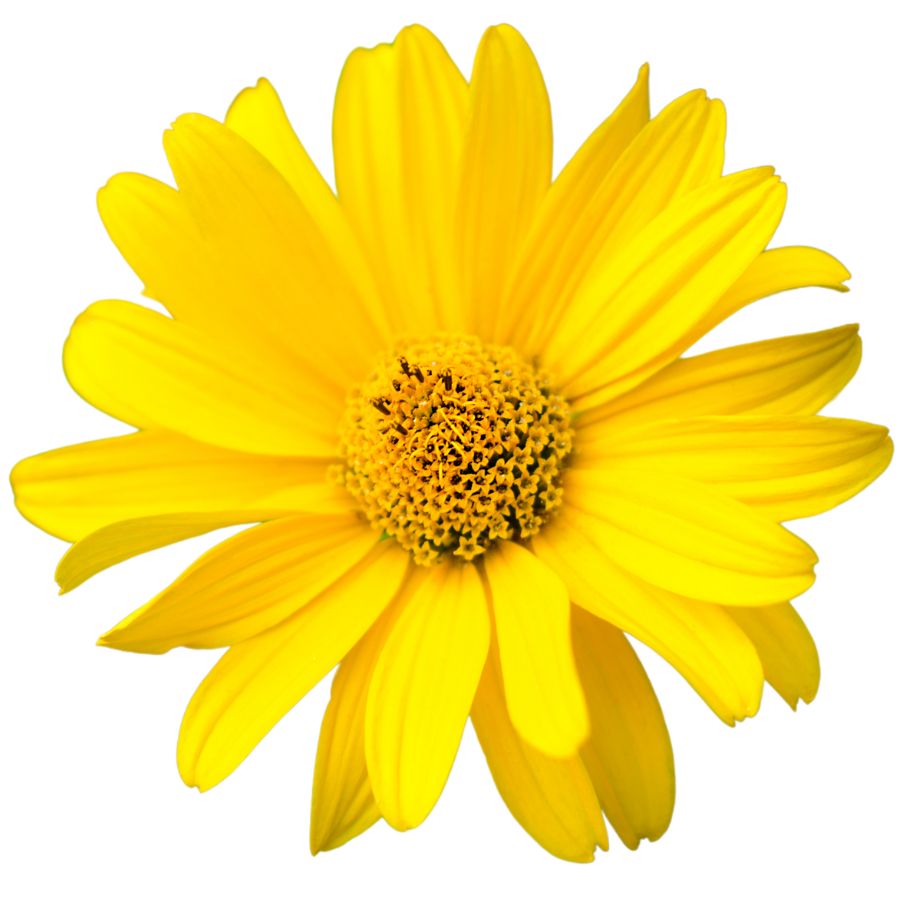
Jerusalem artichoke grows tall with sunflower-like blooms and has knobby underground tubers. The tubers are tan or reddish and look a bit like ginger root, though they belong to the sunflower family.
The part you’re after is the tuber, which has a nutty, slightly sweet flavor and a crisp texture when raw. You can roast, sauté, boil, or mash them like potatoes, and they hold their shape well in soups and stir-fries.
Some people experience gas or bloating after eating sunchokes due to the inulin they contain, so it’s a good idea to try a small amount first. Cooking them thoroughly can help reduce the chances of digestive discomfort.
Sunchokes don’t have many dangerous lookalikes, but it’s important not to confuse the plant with other sunflower relatives that don’t produce tubers. The above-ground part resembles a small sunflower, but it’s the knotted, underground tubers that are worth digging up.
Dandelion (Taraxacum officinale)
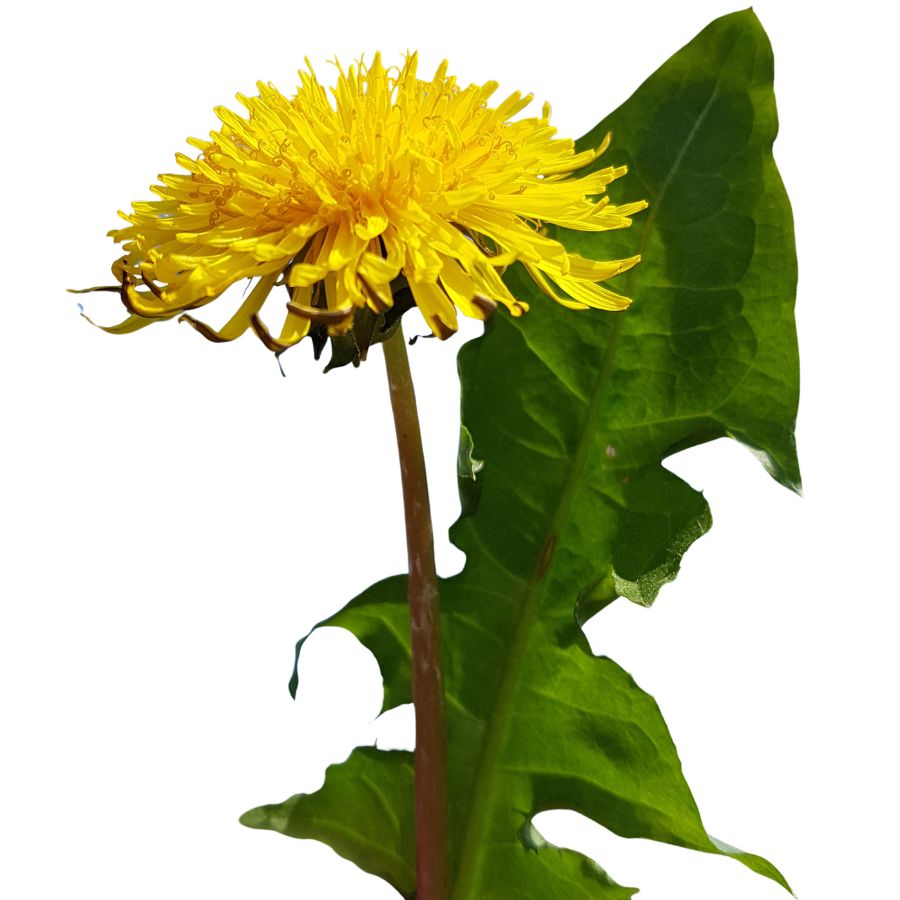
Bright yellow flowers and jagged, deeply toothed leaves make dandelions easy to spot in open fields, lawns, and roadsides. You might also hear them called lion’s tooth, blowball, or puffball once the flowers turn into round, white seed heads.
Every part of the dandelion is edible, but you will want to avoid harvesting from places treated with pesticides or roadside areas with heavy car traffic. Besides being a food source, dandelions have been used traditionally for simple herbal remedies and natural dye projects.
Young dandelion leaves have a slightly bitter, peppery flavor that works well in salads or sautés, and the flowers can be fried into fritters or brewed into tea. Some people even roast the roots to make a coffee substitute with a rich, earthy taste.
One thing to watch out for is cat’s ear, a common lookalike with hairy leaves and branching flower stems instead of a single, hollow one. To make sure you have a true dandelion, check for a smooth, hairless stem that oozes a milky sap when broken.
Wood Sorrel (Oxalis stricta)
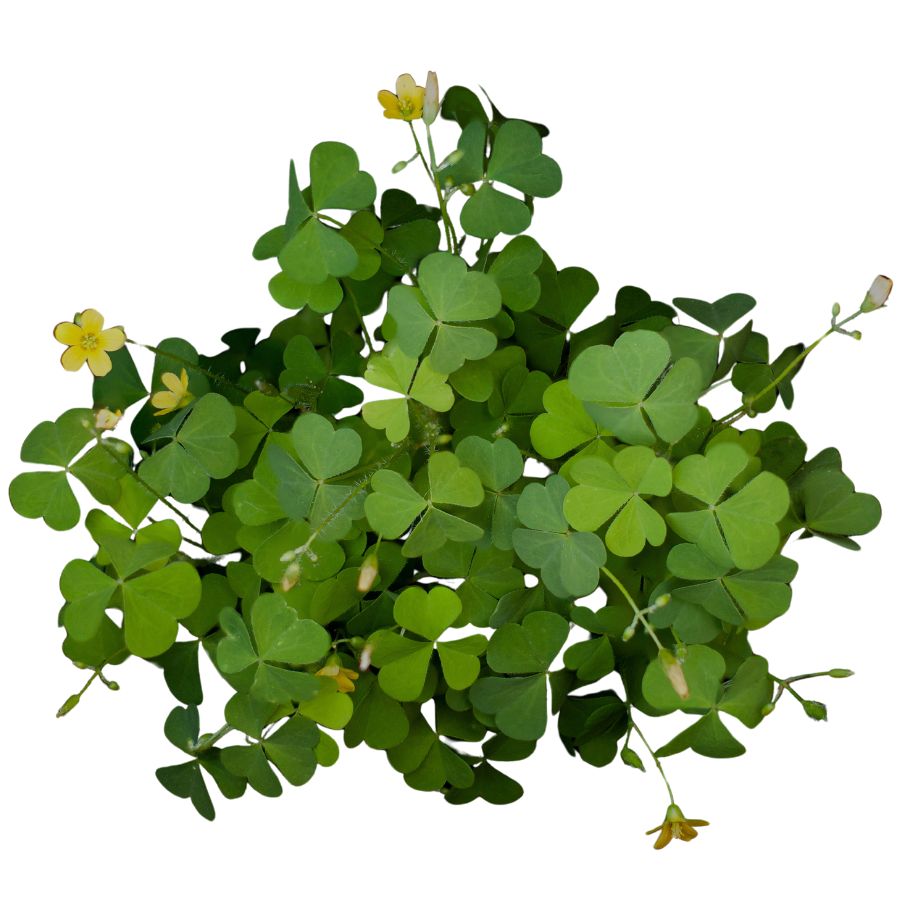
Wood sorrel has clover-like leaves and small yellow flowers. Each leaflet is heart-shaped, and the plant often folds up when touched or in low light.
The leaves, flowers, and seed pods are all safe to eat and have a tart, lemony flavor thanks to the oxalic acid they contain. You can toss them into salads, use them as a garnish, or nibble on them raw for a refreshing sour bite.
Be careful not to confuse it with clover, which has rounder leaves and lacks the same sharp tang when tasted. Large amounts of wood sorrel aren’t recommended if you have kidney issues, since oxalic acid can be hard on the kidneys over time.
The texture of the leaves is soft and delicate, making them a nice contrast in dishes with heavier greens. Even the seed pods have a bit of crunch and a pleasant tang if you catch them before they dry out.
Stinging Nettle (Urtica dioica)
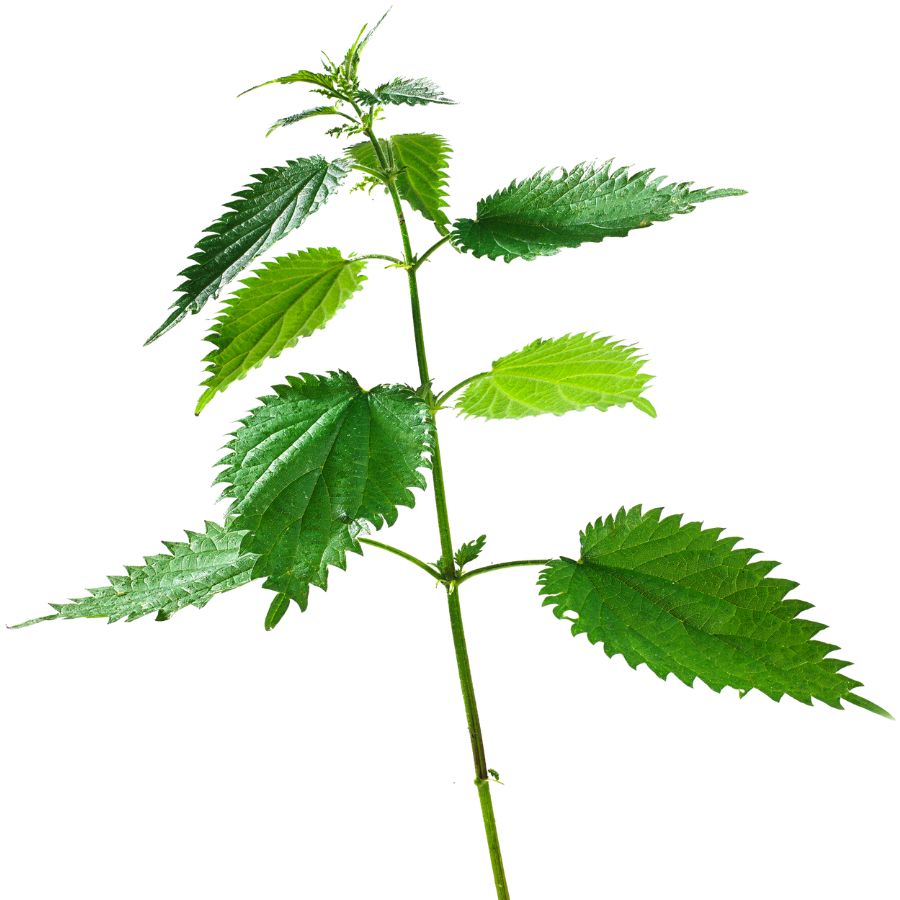
Stinging nettle is also known as burn weed or devil leaf, and it definitely earns those names. The tiny hairs on its leaves and stems can leave a painful, tingling rash if you brush against it raw, so always wear gloves when handling it.
Once it’s cooked or dried, those stingers lose their punch, and the leaves turn mild and slightly earthy in flavor. The texture softens too, making it a solid substitute for spinach in soups, pastas, or even as a simple sauté.
The young leaves and tender tops are what you want to collect. Avoid the tough lower stems and older leaves, which can be gritty or unpleasant to chew.
Some people confuse stinging nettle with purple deadnettle or henbit, but those don’t sting and have more rounded, fuzzy leaves. If the plant doesn’t make your skin react, it’s not stinging nettle.
Wild Bergamot (Monarda fistulosa)
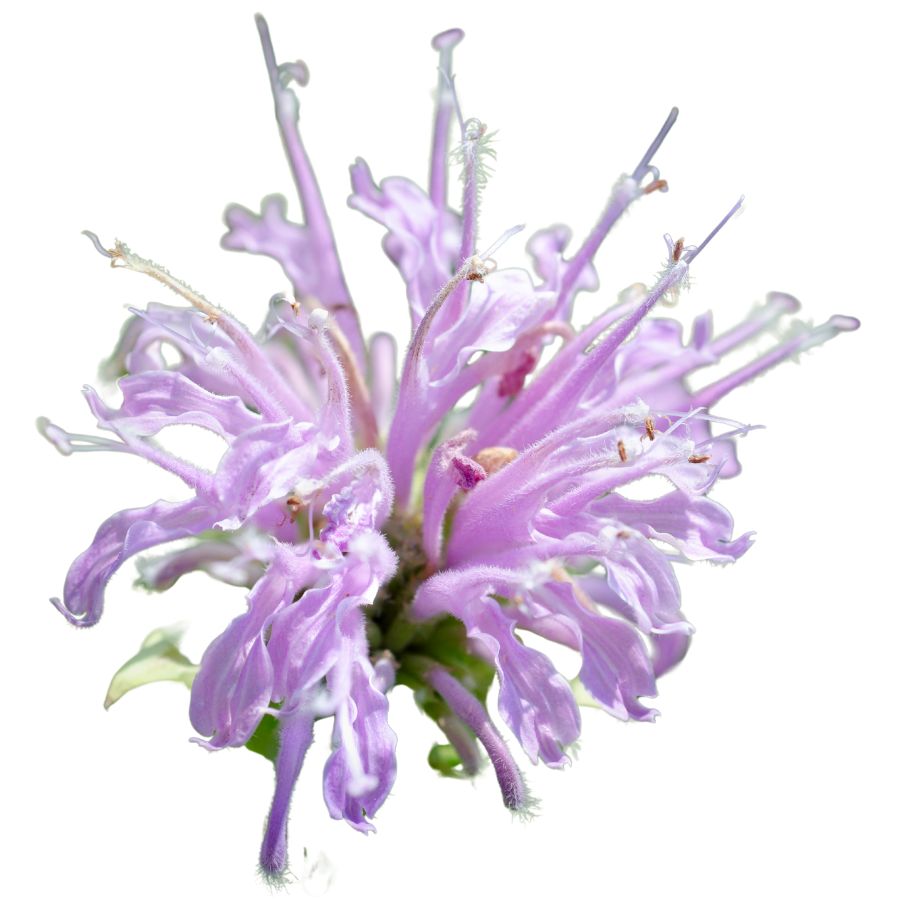
Wild bergamot has clusters of lavender-colored flowers and opposite leaves that smell like thyme when crushed. Its flavor leans herbal and minty, with a little bitterness that works well in marinades.
The flower heads are shaggy and irregular, and the plant’s square stem helps tell it apart from lookalikes like spotted horsemint.
In recipes, it’s most often dried and steeped or blended into herb mixes.
Both leaves and petals can be eaten, though most people avoid the stems. Don’t eat it in large amounts raw—it’s strong and can be overpowering.
It’s related to mint, and that shows in how fast the flavor develops when heat is applied. You’ll get the most aroma if you bruise the leaves before using them.
American Plum (Prunus americana)
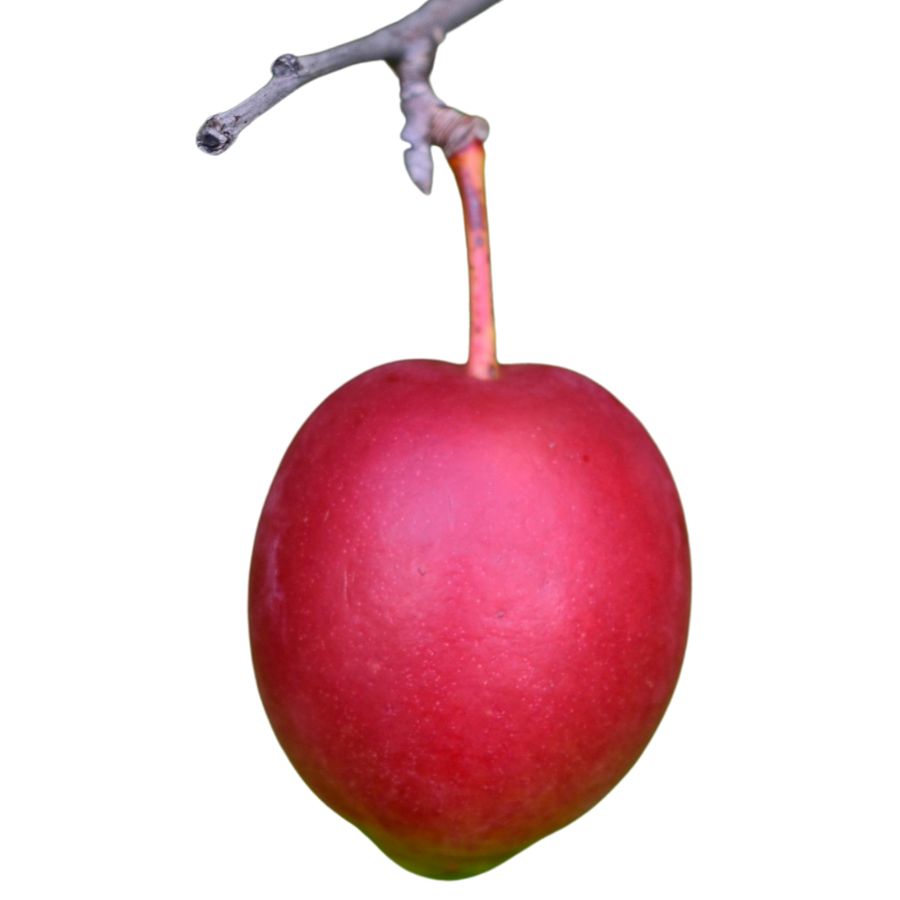
American plum, also called wild plum or river plum, produces small round fruits that range in color from yellow to deep red when ripe. The skin is slightly tart, but the flesh is soft, juicy, and sweet with a hint of spice.
You can eat the fruit raw or turn it into jellies, sauces, or wines—its natural pectin makes it ideal for preserves. Just avoid the seeds and leaves, which contain compounds that can release cyanide when crushed or chewed.
Its bark is rough and dark, and the branches often have short, sharp spines. The plant’s simple oval leaves and white spring flowers help distinguish it from less edible lookalikes like black cherry, which has longer, narrower leaves with a more bitter fruit.
If the fruit has a strong bitter almond smell when crushed, steer clear—it might be a different species altogether. American plum fruit clusters tend to be smaller and more tightly packed than those of cultivated varieties.
Chickweed (Stellaria media)
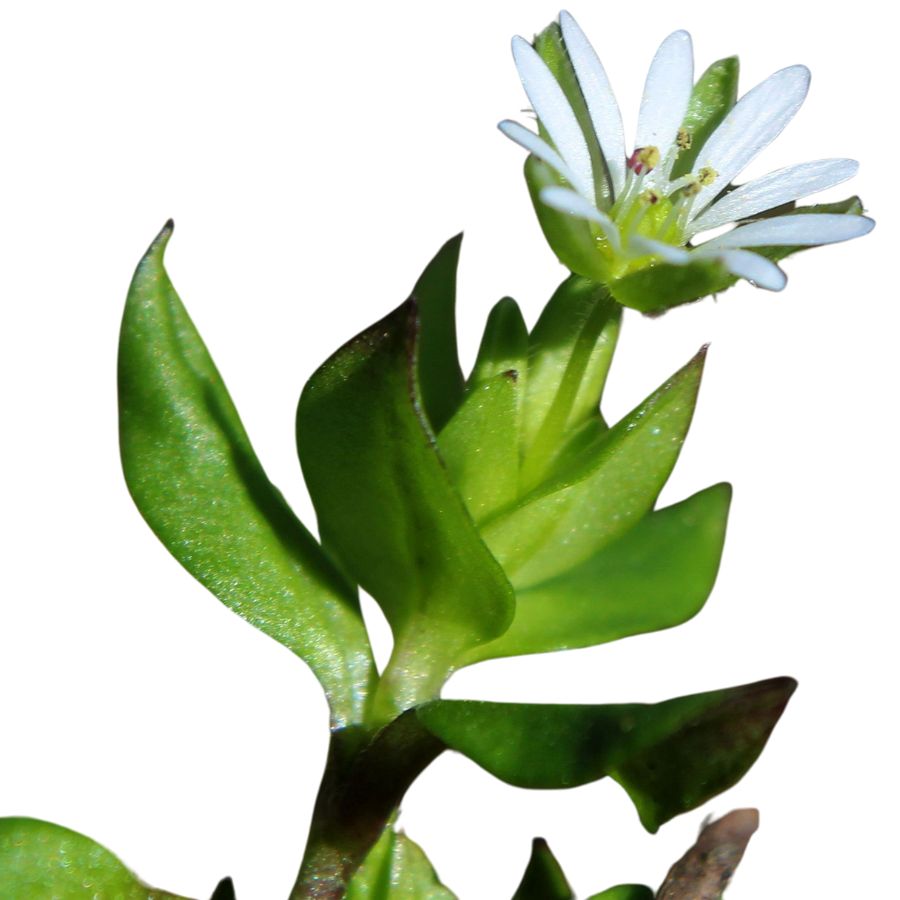
Chickweed, sometimes called satin flower or starweed, is a small, low-growing plant with delicate white star-shaped flowers and bright green leaves. The leaves are oval, pointed at the tip, and often grow in pairs along a slender, somewhat weak-looking stem.
When gathering chickweed, watch out for lookalikes like scarlet pimpernel, which has similar leaves but orange flowers instead of white. A key detail to check is the fine line of hairs that runs along one side of chickweed’s stem, a feature the dangerous lookalikes do not have.
The young leaves, tender stems, and flowers of chickweed are all edible, offering a mild, slightly grassy flavor with a crisp texture. You can toss it fresh into salads, blend it into pestos, or lightly wilt it into soups and stir-fries for a fresh green boost.
Aside from being a food plant, chickweed has been used traditionally in poultices and salves to help soothe skin irritations. Always make sure the plant is positively identified before eating, since mistaking it for a toxic lookalike could cause serious issues.
Red Clover (Trifolium pratense)
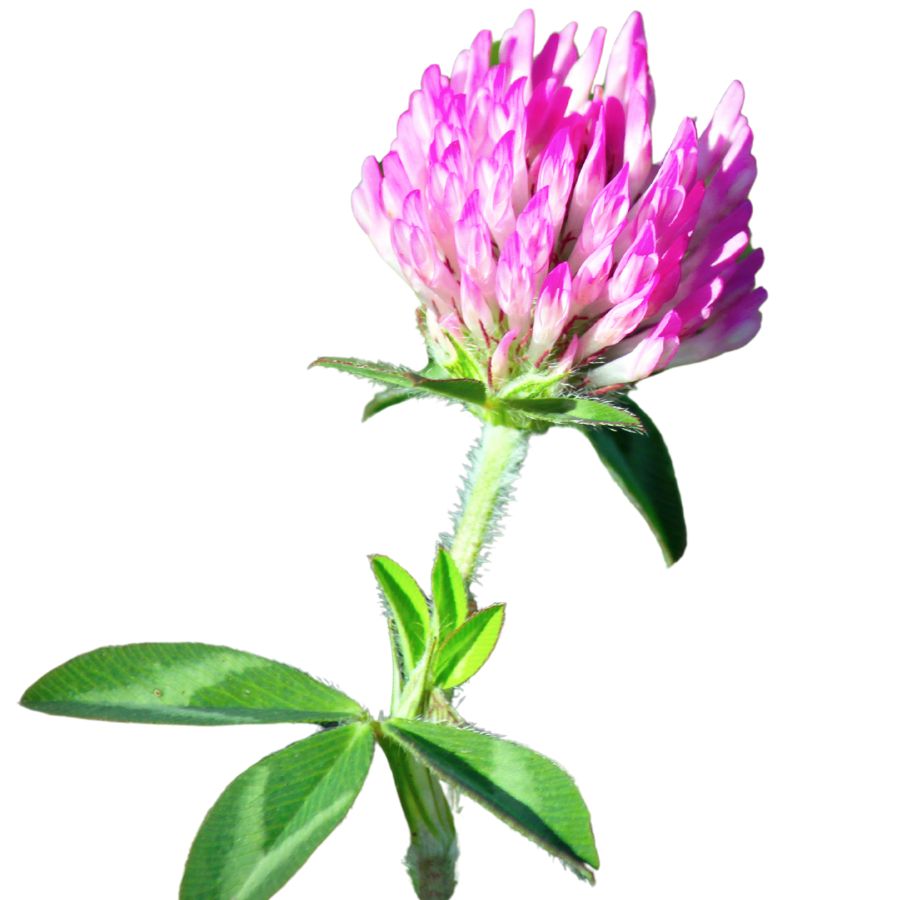
Red clover is also called wild clover or purple clover, and it grows in open areas with lots of sunlight. The round flower heads are a soft pinkish red, and the leaves have a pale crescent near the center.
The flower heads are the part most often gathered, and they can be eaten raw or dried for later use. Some people steep them in hot water for a mild, slightly sweet tea with a grassy flavor.
If you’re collecting flowers, make sure not to confuse them with crown vetch, which grows in similar spots but has more elongated, pea-like flowers. Crown vetch isn’t safe to eat, and it usually has a vine-like growth pattern that red clover doesn’t.
Red clover flowers can be tossed into salads or baked into muffins and breads for color and a hint of sweetness. The leaves are sometimes eaten too, but they tend to be tougher and more bitter.
Eastern Redbud (Cercis canadensis)
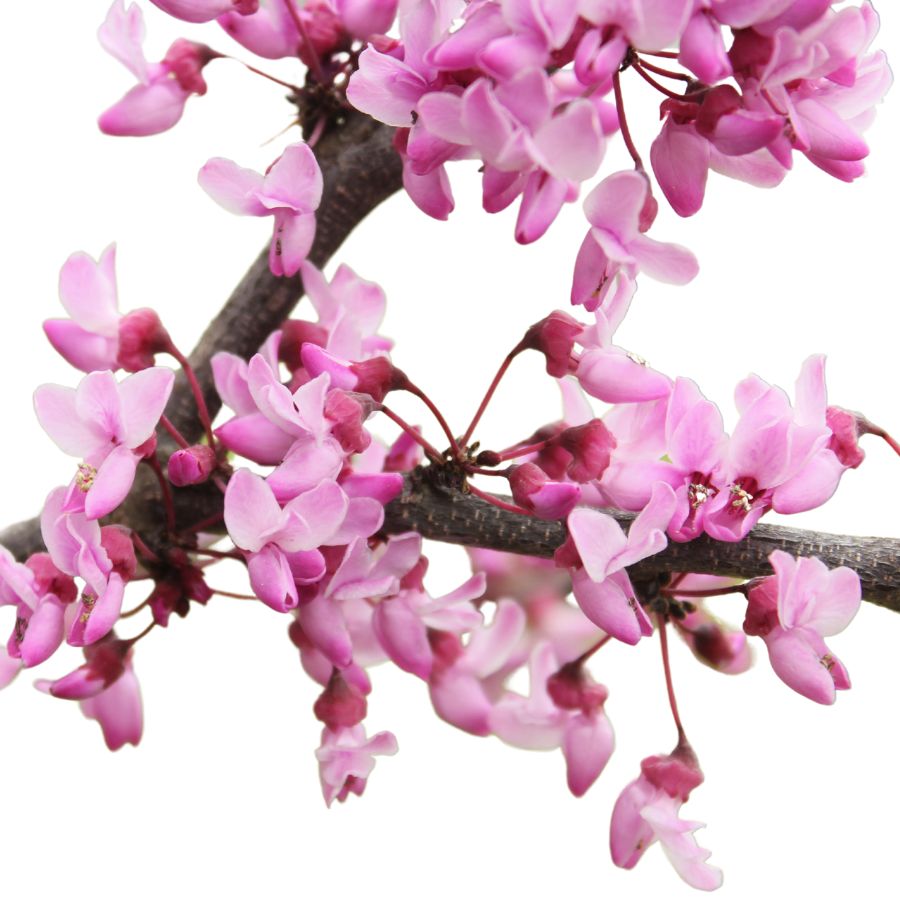
The small, pinkish-purple flowers of the eastern redbud grow directly from the branches and even the trunk. These blooms are edible raw and have a slightly tangy, pea-like flavor that works well in salads or as a garnish.
You can also eat the young seed pods when they’re still flat and tender. They taste somewhat like snow peas and can be lightly steamed, stir-fried, or pickled.
Avoid older seed pods, which become tough and fibrous. Also be aware that while the flowers and young pods are safe to eat, the mature seeds and bark are not consumed.
Some people sprinkle the blossoms into baked goods for a splash of color and a mild floral note. Others like to candy the flowers, though they lose some of their fresh bite in the process.
Redroot Pigweed (Amaranthus retroflexus)
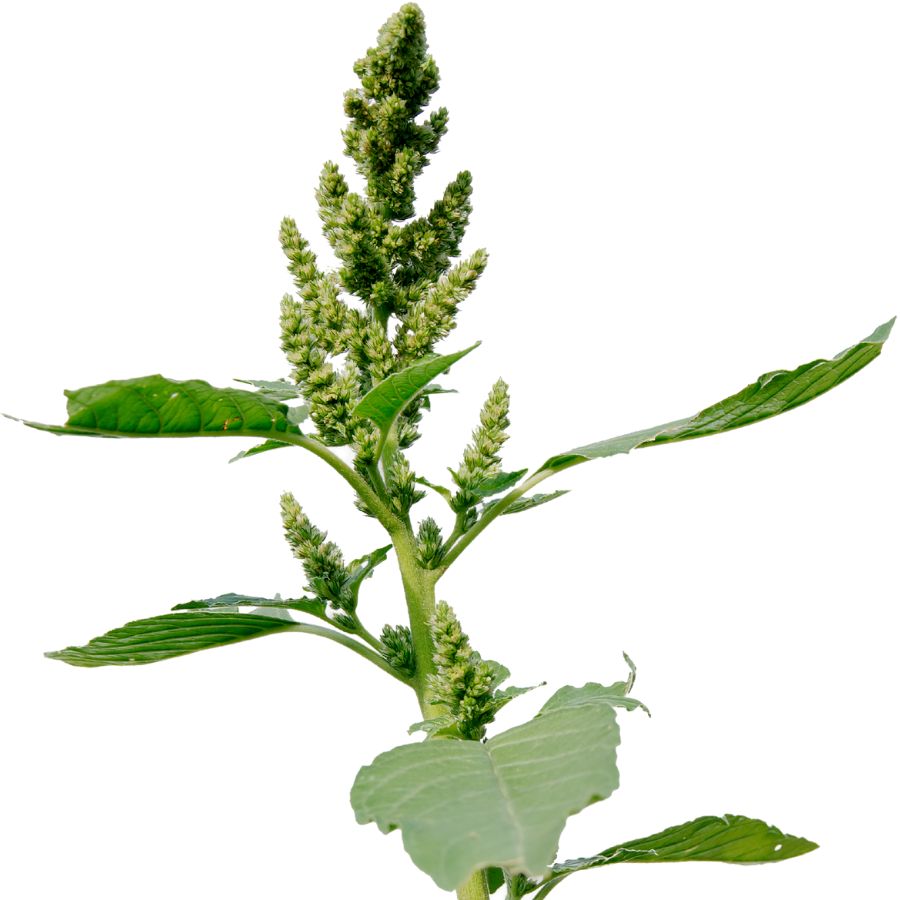
You’ve probably seen redroot pigweed—often called red-root amaranth or common amaranth—sprouting in vacant lots, gardens, or even sidewalks, with its dense clusters of greenish flowers and coarse, branching stems. Its leaves are dull green and oval-shaped with a slight point, and its thick taproot is usually red.
The young leaves and stems cook down well into soups, stir-fries, or stews, and the texture becomes silky once wilted. Raw, they can be bitter, but the bitterness fades after blanching or sautéing with oil and salt.
Don’t confuse it with spiny amaranth, which has small, rigid spines at the leaf nodes—those are absent on pigweed. While pigweed is edible, it’s best to avoid plants from contaminated soils, since it absorbs heavy metals and herbicide residue.
The seeds, though tiny, can be collected in bulk and toasted or added to grain dishes. You can also sprout them for a slightly nutty taste, but be aware the seedheads can be hard to clean due to their chaff.
Black Walnut (Juglans nigra)
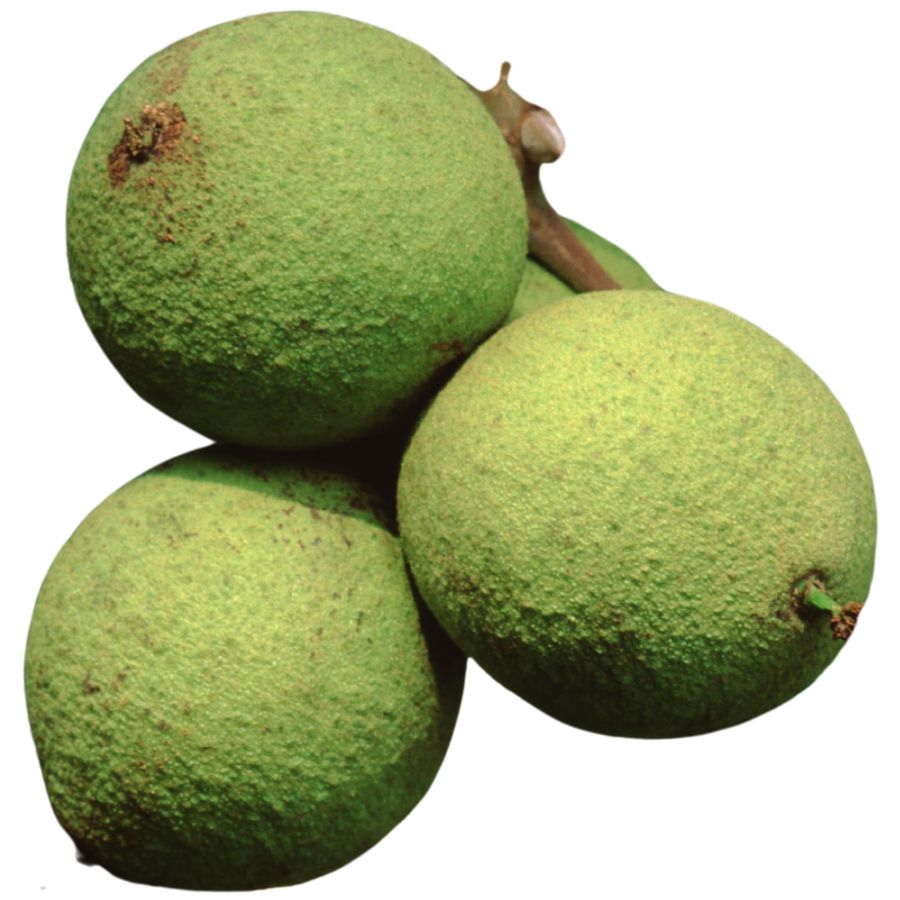
The nuts of the black walnut, sometimes called American walnut or eastern black walnut, have a tough outer husk and a deeply ridged shell inside. When you crack them open, you will find a rich, oily seed with an earthy, slightly bitter flavor that sets them apart from the sweeter English walnut.
It is easy to confuse black walnut with butternut, another tree with compound leaves and rough bark. If you check the nuts closely, black walnut fruits are round with a thick green husk, while butternuts are more oval and sticky.
When you get your hands on the nuts, the common ways to prepare them include baking them into cookies, sprinkling them over salads, or grinding them into a strong-tasting flour. The seeds themselves have a firm, almost chewy texture when raw and become crunchy after roasting.
Only the inner seed is eaten, while the outer husk and shell are discarded because they contain compounds that can irritate your skin. A fun fact about this plant is that even the roots and leaves produce a chemical called juglone, which can make it hard for other plants to grow nearby.
American Persimmon (Diospyros virginiana)
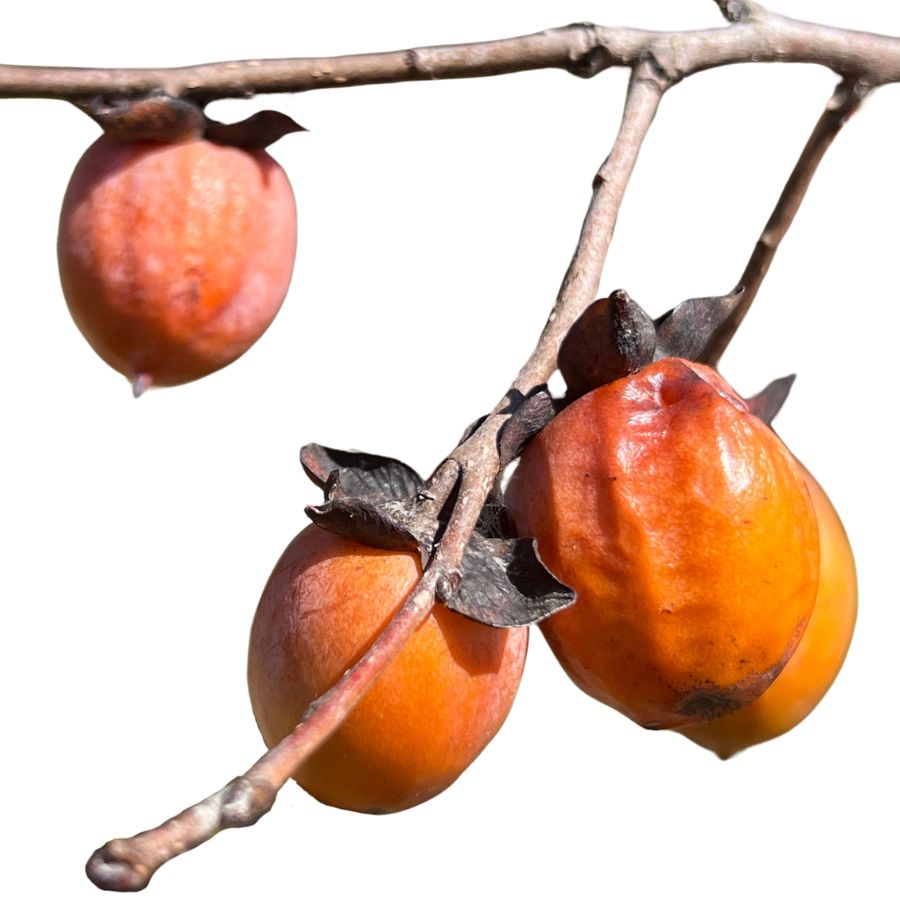
Persimmon, sometimes called American persimmon or common persimmon, grows as a small tree with rough, blocky bark and oval-shaped leaves. The fruit looks like a small, flattened tomato and turns a deep orange or reddish color when ripe.
If you bite into an unripe persimmon, you will quickly notice an extremely astringent, mouth-drying effect. A ripe persimmon, on the other hand, tastes sweet, rich, and custard-like, with a soft and jelly-like texture inside.
You can eat persimmons fresh once they are fully ripe, or you can cook them down into puddings, jams, and baked goods. Some people also mash and freeze the pulp to use later for pies, breads, and sauces.
Wild persimmons can sometimes be confused with black nightshade berries, but nightshade fruits are much smaller, grow in clusters, and stay dark purple or black. Only the ripe fruit of the persimmon tree should be eaten; the seeds and the unripe fruit are not edible.
Prairie Prickly Pear Cactus (Opuntia macrorhiza)
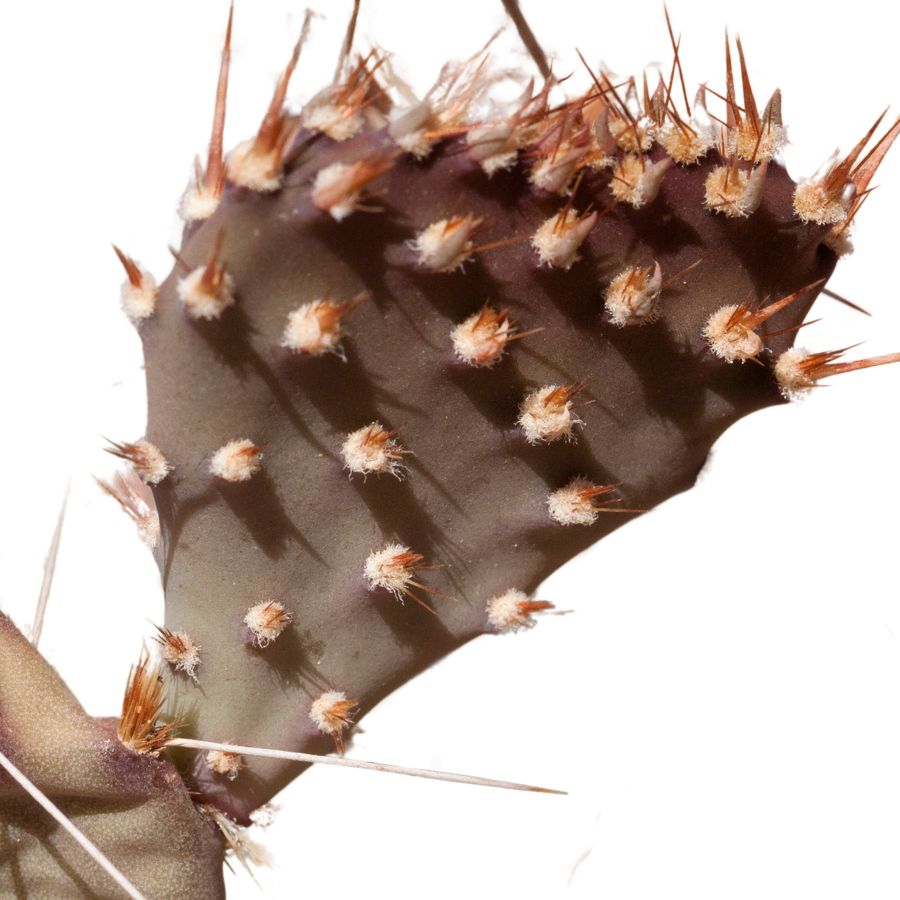
The prairie prickly pear cactus grows in low, spreading clusters with flat, green pads that are studded with sharp spines and small bumps called glochids. You can eat the pads, called nopales, after removing the spines and slicing them into strips.
When cooked, the pads have a tangy, lemony flavor and a slightly slick texture similar to okra. Most people boil, grill, or sauté them, often adding them to eggs, soups, or tacos.
The fruits, or tunas, are also edible once peeled, and they offer a sweet, melon-like taste with a seedy bite. Be careful of spiny lookalikes with longer, narrower pads—those are often less palatable and much harder to clean.
Make sure to use gloves and a knife when handling the plant to avoid getting glochids stuck in your skin. The roots, spines, and glochids should never be eaten.
Wild Prairie Rose (Rosa arkansana)
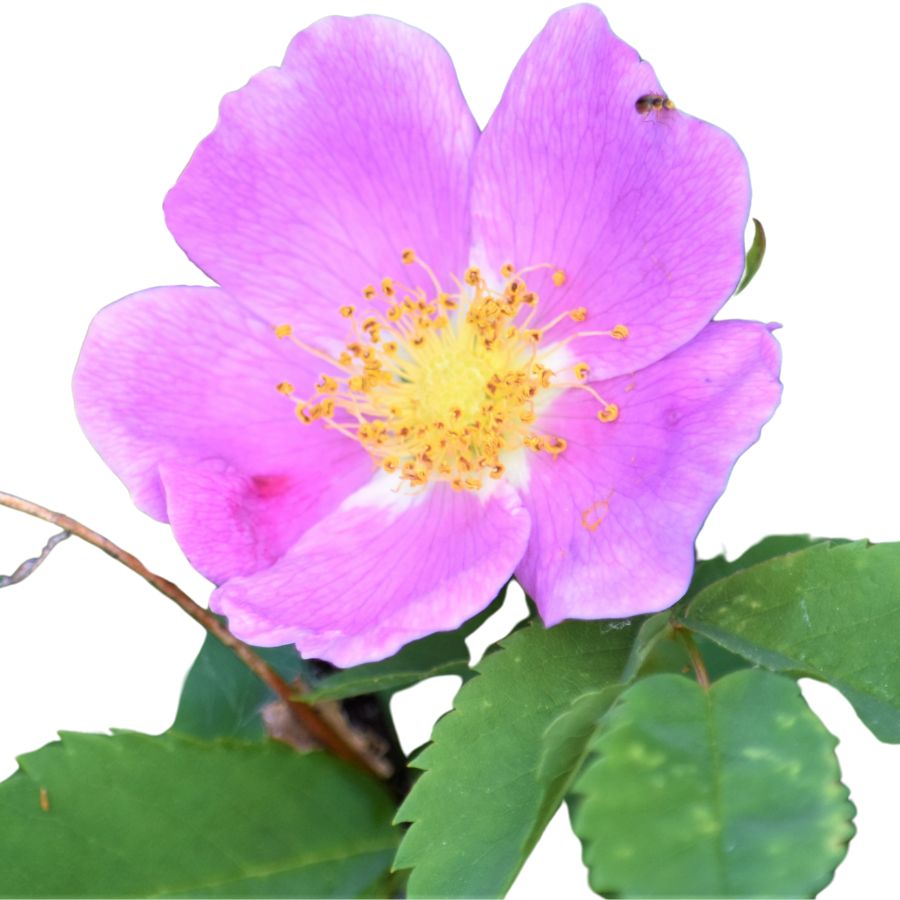
Wild prairie rose has single-layered pink blossoms that open flat and wide, typically no larger than a silver dollar. The plant produces round red hips later on, which are smooth-skinned and slightly firm to the touch.
Both the petals and hips are edible, though they’re usually handled differently—petals are often candied or steeped, while hips are boiled, mashed, or dried. The flavor of the hips leans tangy and citrusy, and the texture softens when cooked.
Some invasive shrub roses may look similar but usually grow taller and produce clustered flowers with more petals. You can tell them apart by checking the shape and count of the petals and looking for paired leaflets.
Don’t eat the seeds inside the hips—they’re fibrous and contain irritating hairs. Stick with the fleshy outer layer of the hips and the clean, fragrant petals.
Sunflower (Helianthus annuus)
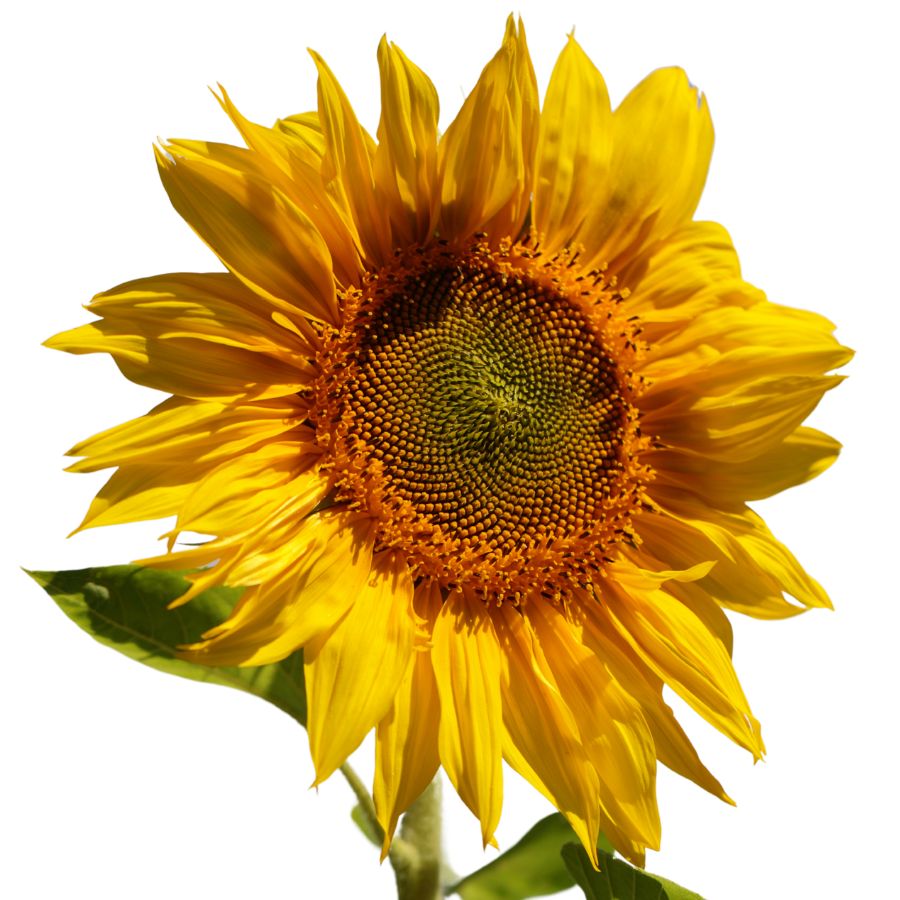
Sunflowers have a thick, rough stem and large, broad leaves with a slightly sandpapery texture. The huge circular flower head is made up of bright yellow petals surrounding a dark center packed with seeds.
The seeds inside the flower head are edible once they mature, and you can eat them raw, roasted, or ground into meal. The young flower buds are also edible and can be steamed or sautéed like an artichoke.
When gathering sunflower seeds, make sure not to confuse the plant with certain types of wild composites that have smaller flowers and thin, spindly stalks. True sunflowers always have a thick, sturdy stem and a flower head that can be as wide as a dinner plate.
Sunflower seeds have a mild, nutty flavor and a tender crunch when fresh. You can also press the seeds for oil or sprout them for a nutritious snack.
Meadow Garlic (Allium canadense)
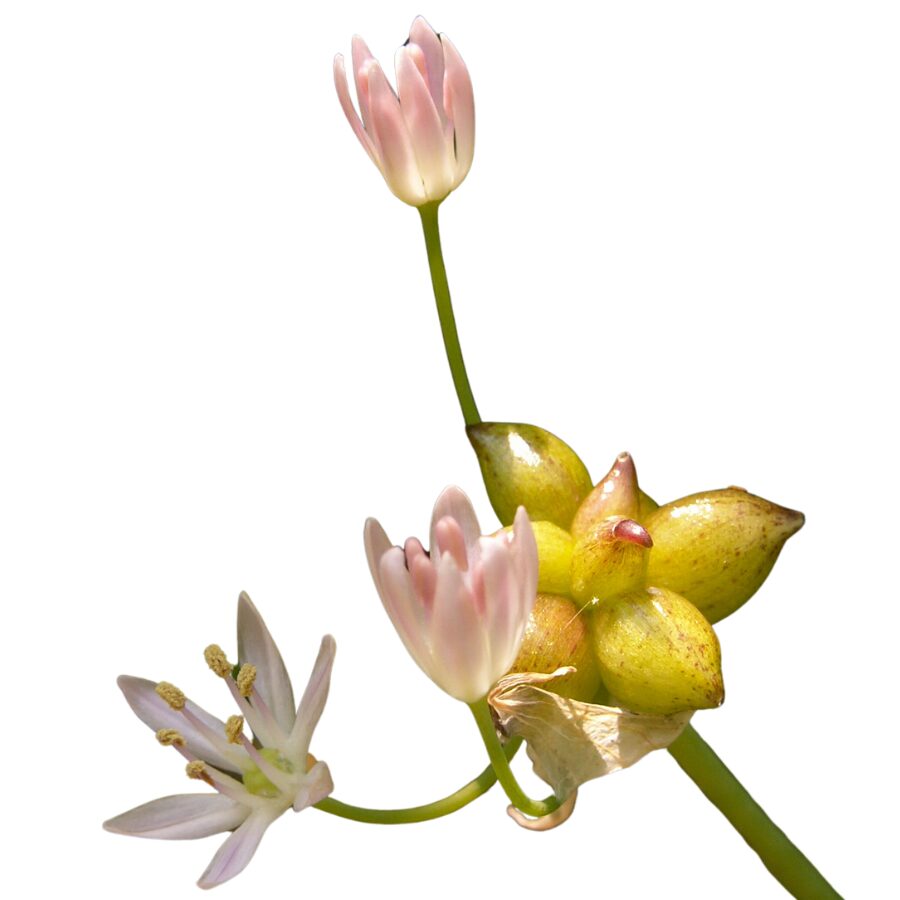
Meadow garlic, also called wild onion or wild garlic, grows in clumps with slender hollow leaves and small pink or white flowers. You’ll recognize it by the onion scent released when you bruise the stems or dig into the bulb.
The edible parts include the bulbs, stems, leaves, and flowers, all of which have a mild onion flavor and crisp texture. Cook them as you would scallions—sautéed, grilled, or tossed raw into salads.
False garlic, or crow poison, looks similar but lacks the onion smell and can be toxic if eaten. Always crush the plant before harvesting—no onion scent means don’t eat it.
Many people pickle the bulbs or chop the greens for compound butters and dips. Be cautious where you forage it though, as plants growing near roadsides or sprayed areas can absorb contaminants.
Mulberry (Morus rubra)
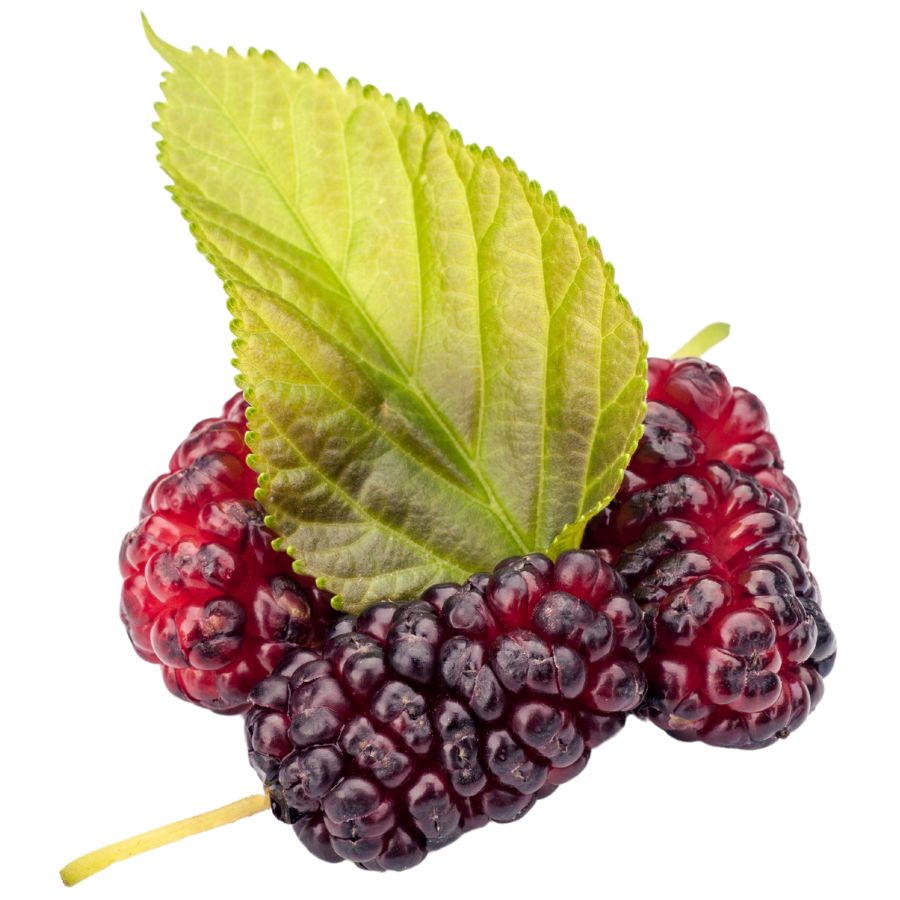
Sweet, juicy, and often overlooked, mulberries are one of the easiest wild berries to recognize. Known by names like white mulberry and red mulberry, these trees produce small, blackberry-like fruits that range from pale pink to deep purple.
The berries have a soft, almost melting texture with a mild tartness behind the sugar. You can eat them fresh by the handful, bake them into pies, or simmer them down into homemade jams and syrups.
While the fruits are safe and delicious when ripe, you should avoid eating the unripe berries or any part of the tree’s sap, which can cause stomach upset. It is also worth knowing that mulberries are delicate and bruise easily when picked, so handle them gently.
Red osier dogwood and some honeysuckles can produce berries that look similar from a distance, but true mulberries grow singly or in loose clusters along the branches and have a distinctive leaf shape that sets them apart. Always double-check the leaf texture and berry arrangement before eating any wild fruits.
Field Pennycress (Thlaspi arvense)
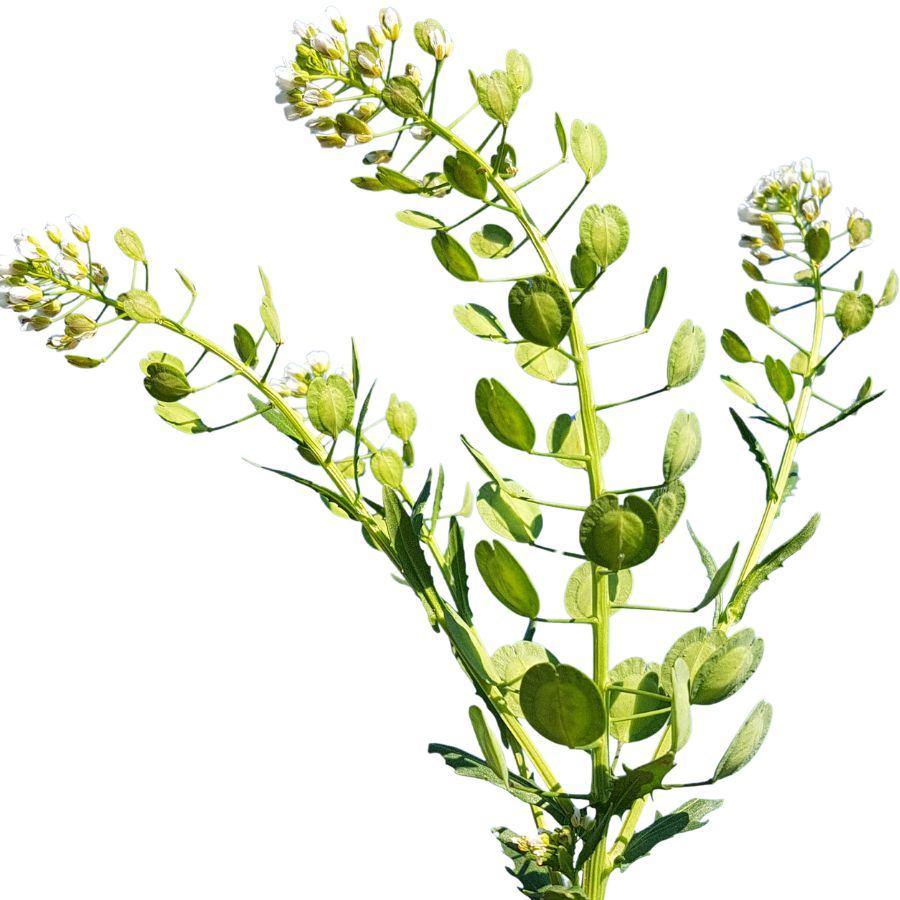
Field pennycress produces flat, round seed pods with a central notch that resemble tiny coins hanging along the stalk. Its leaves are hairless and arrow-shaped at the base, often clasping the stem.
You can eat the young leaves raw in small amounts, but they’re usually better cooked due to their peppery bitterness. The seeds can be ground into a pungent mustard-like spice with a sharp, lingering flavor.
Avoid confusing it with shepherd’s purse, which has similar seed pods but with heart-shaped outlines and a more delicate overall structure. Unlike shepherd’s purse, field pennycress has a stronger odor when crushed and a more pronounced central vein on the pods.
The leaves, seed pods, and seeds are edible, but the mature plant becomes tough and bitter with age. If you’re after a wild green that bites back, this one brings the heat.
Wild Carrot (Daucus carota)
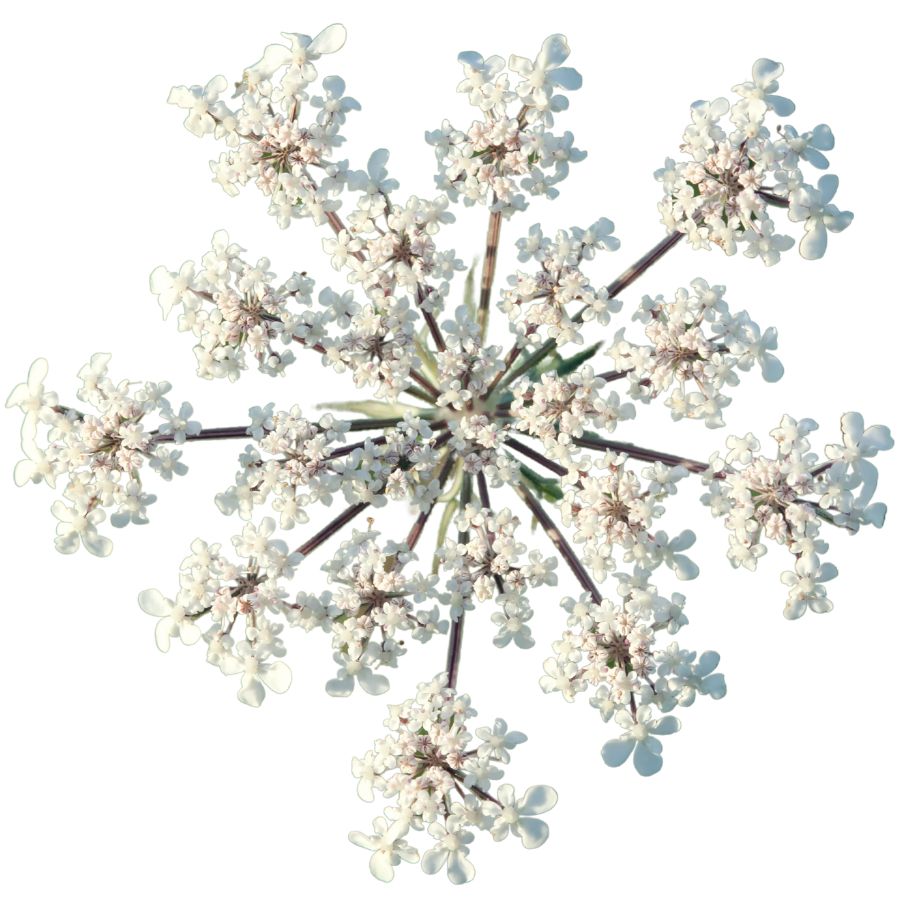
Wild carrot, which you might know as Queen Anne’s lace, grows a slender, white taproot that’s tough and fibrous when mature. When it’s young, the root has a faint carrot scent and a slightly earthy taste that comes through best when boiled or slow-roasted.
The most dangerous thing about wild carrot is how closely it resembles poison hemlock, which has smooth, hairless stems with purple blotches. Wild carrot has fine hairs along its stems and a single dark floret in the center of its flat white flower clusters.
If you’re going to try it, stick to the root and avoid the leaves and stems, which can cause skin irritation in some people. The root is usually peeled, chopped, and cooked like a tougher version of a garden carrot, but don’t expect it to be sweet.
One interesting trait is how the flower head curls into a tight, nest-like shape as it matures. This plant’s close relatives include common garden carrots, but wild ones grow thinner, drier, and with a much stronger flavor.
Toxic Plants That Look Like Edible Plants
There are plenty of wild edibles to choose from, but some toxic native plants closely resemble them. Mistaking the wrong one can lead to severe illness or even death, so it’s important to know exactly what you’re picking.
Poison Hemlock (Conium maculatum)
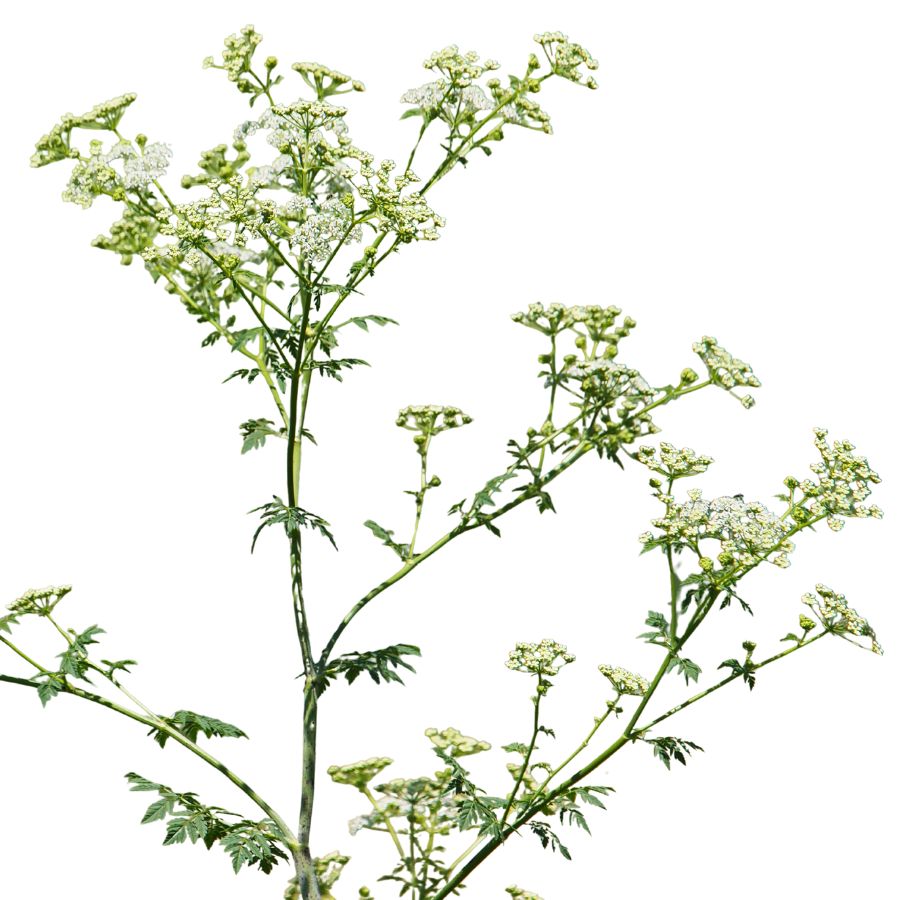
Often mistaken for: Wild carrot (Daucus carota)
Poison hemlock is a tall plant with lacy leaves and umbrella-like clusters of tiny white flowers. It has smooth, hollow stems with purple blotches and grows in sunny places like roadsides, meadows, and stream banks.
Unlike wild carrot, which has hairy stems and a dark central floret, poison hemlock has a musty odor and no flower center spot. It’s extremely toxic; just a small amount can be fatal, and even touching the sap can irritate the skin.
Water Hemlock (Cicuta spp.)
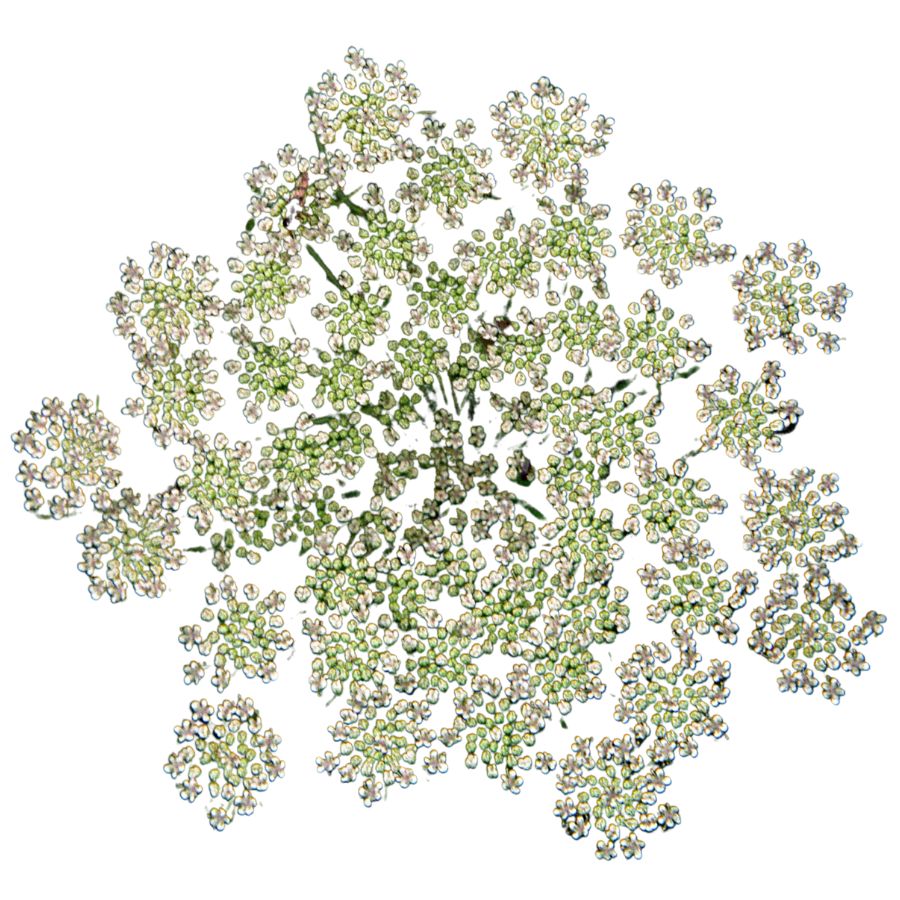
Often mistaken for: Wild parsnip (Pastinaca sativa) or wild celery (Apium spp.)
Water hemlock is a tall, branching plant with umbrella-shaped clusters of small white flowers. It grows in wet places like stream banks, marshes, and ditches, with stems that often show purple streaks or spots.
It can be confused with wild parsnip or wild celery, but its thick, hollow roots have internal chambers and release a yellow, foul-smelling sap when cut. Water hemlock is the most toxic plant in North America, and just a small amount can cause seizures, respiratory failure, and death.
False Hellebore (Veratrum viride)
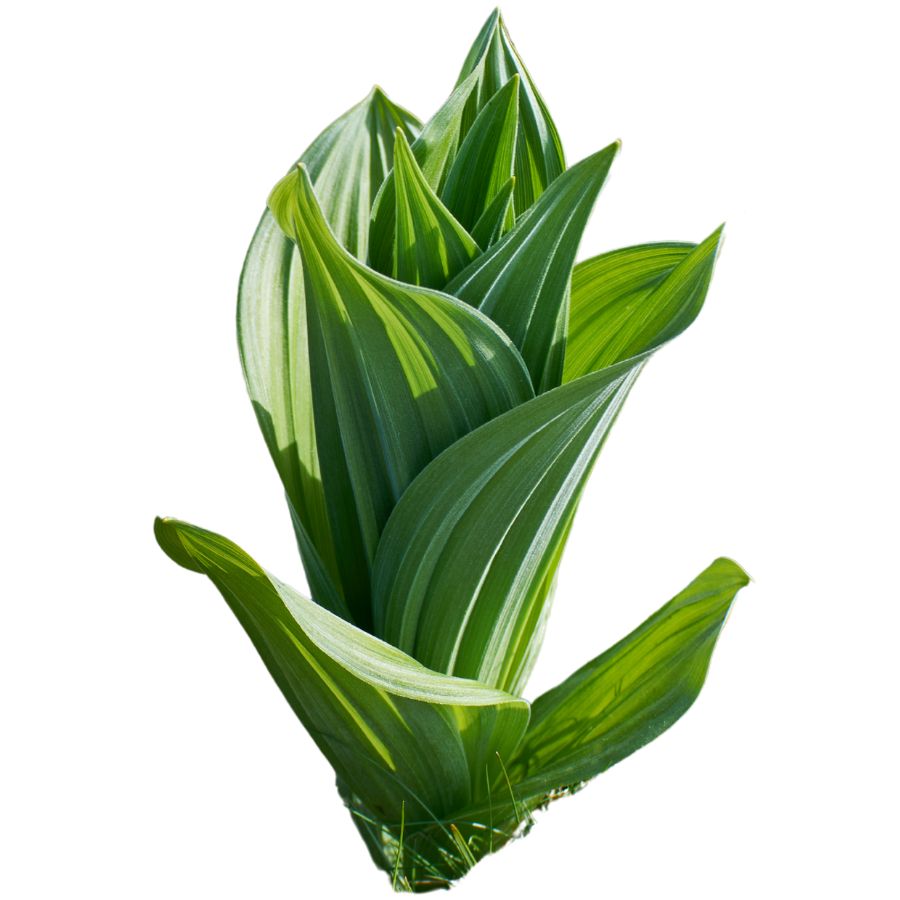
Often mistaken for: Ramps (Allium tricoccum)
False hellebore is a tall plant with broad, pleated green leaves that grow in a spiral from the base, often appearing early in spring. It grows in moist woods, meadows, and along streams.
It’s commonly mistaken for ramps, but ramps have a strong onion or garlic smell, while false hellebore is odorless and later grows a tall flower stalk. The plant is highly toxic, and eating any part can cause nausea, a slowed heart rate, and even death due to its alkaloids that affect the nervous and cardiovascular systems.
Death Camas (Zigadenus spp.)
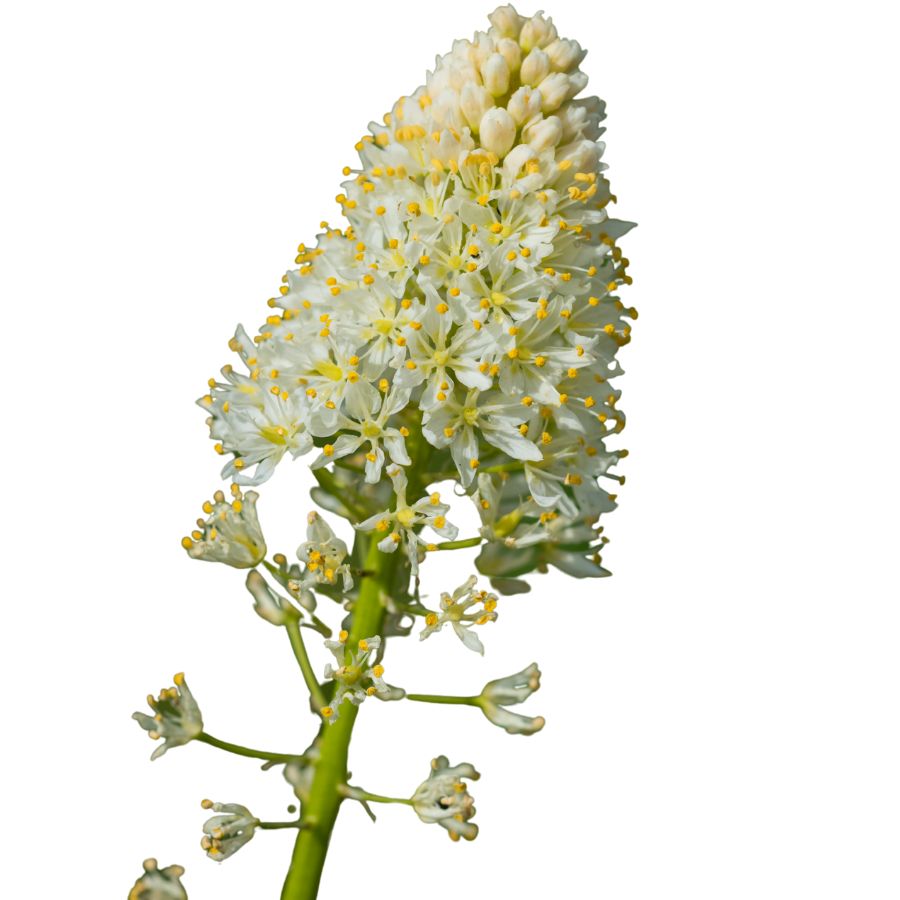
Often mistaken for: Wild onion or wild garlic (Allium spp.)
Death camas is a slender, grass-like plant that grows from underground bulbs and is found in open woods, meadows, and grassy hillsides. It has small, cream-colored flowers in loose clusters atop a tall stalk.
It’s often confused with wild onion or wild garlic due to their similar narrow leaves and habitats, but only Allium plants have a strong onion or garlic scent, while death camas has none. The plant is extremely poisonous, especially the bulbs, and even a small amount can cause nausea, vomiting, a slowed heartbeat, and potentially fatal respiratory failure.
Buckthorn Berries (Rhamnus spp.)
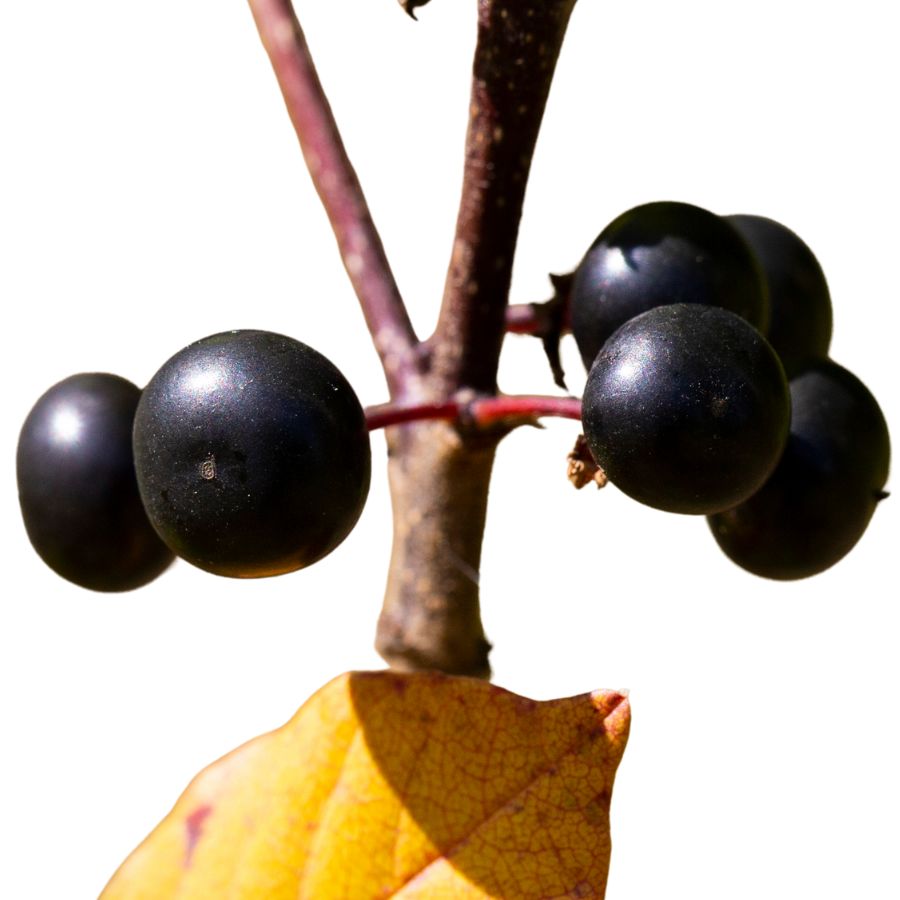
Often mistaken for: Elderberries (Sambucus spp.)
Buckthorn is a shrub or small tree often found along woodland edges, roadsides, and disturbed areas. It produces small, round berries that ripen to dark purple or black and usually grow in loose clusters.
These berries are sometimes mistaken for elderberries and other wild fruits, which also grow in dark clusters, but elderberries form flat-topped clusters on reddish stems while buckthorn berries are more scattered. Buckthorn berries are unsafe to eat as they contain compounds that can cause cramping, vomiting, and diarrhea, and large amounts may lead to dehydration and serious digestive problems.
Mayapple (Podophyllum peltatum)
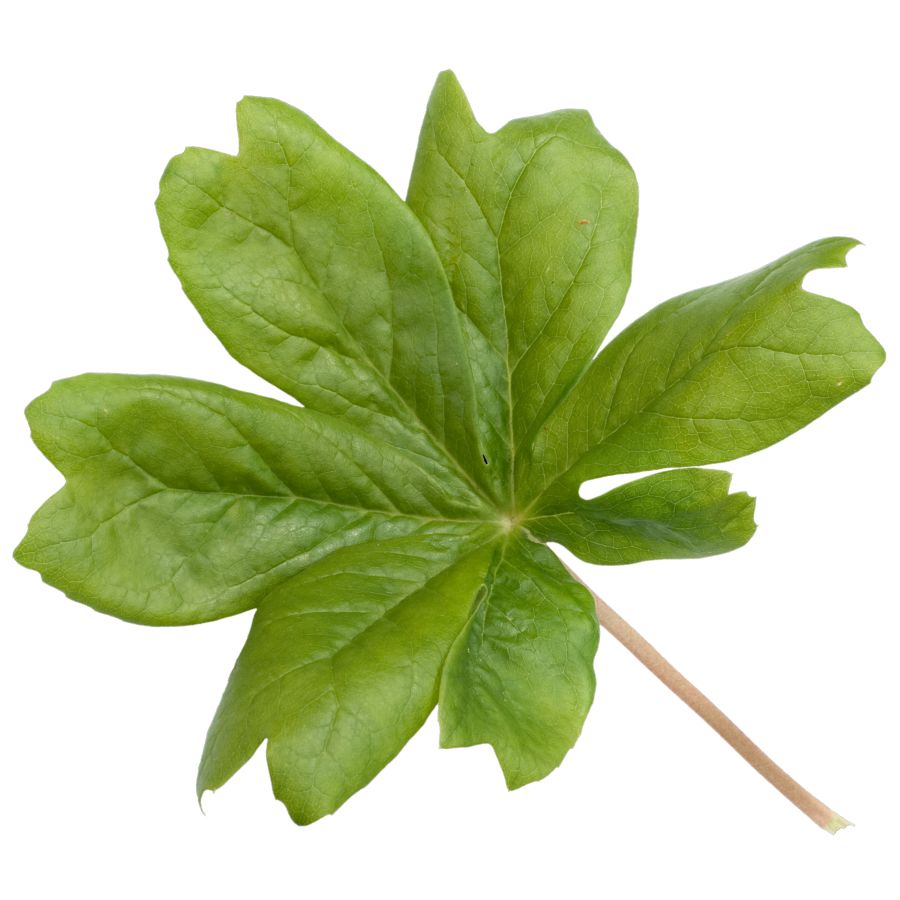
Often mistaken for: Wild grapes (Vitis spp.)
Mayapple is a low-growing plant found in shady forests and woodland clearings. It has large, umbrella-like leaves and produces a single pale fruit hidden beneath the foliage.
The unripe fruit resembles a small green grape, causing confusion with wild grapes, which grow in woody clusters on vines. All parts of the mayapple are toxic except the fully ripe, yellow fruit, which is only safe in small amounts. Eating unripe fruit or other parts can lead to nausea, vomiting, and severe dehydration.
Virginia Creeper (Parthenocissus quinquefolia)
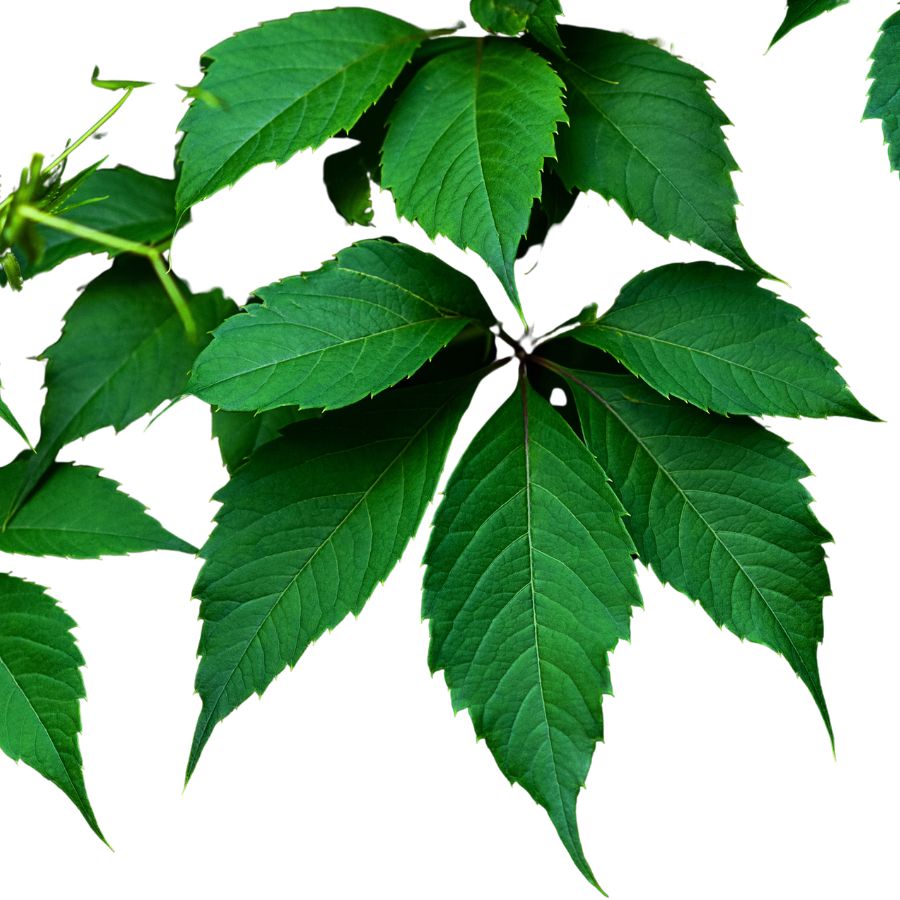
Often mistaken for: Wild grapes (Vitis spp.)
Virginia creeper is a fast-growing vine found on fences, trees, and forest edges. It has five leaflets per stem and produces small, bluish-purple berries from late summer to fall.
It’s often confused with wild grapes since both are climbing vines with similar berries, but grapevines have large, lobed single leaves and tighter fruit clusters. Virginia creeper’s berries are toxic to humans and contain oxalate crystals that can cause nausea, vomiting, and throat irritation.
Castor Bean (Ricinus communis)
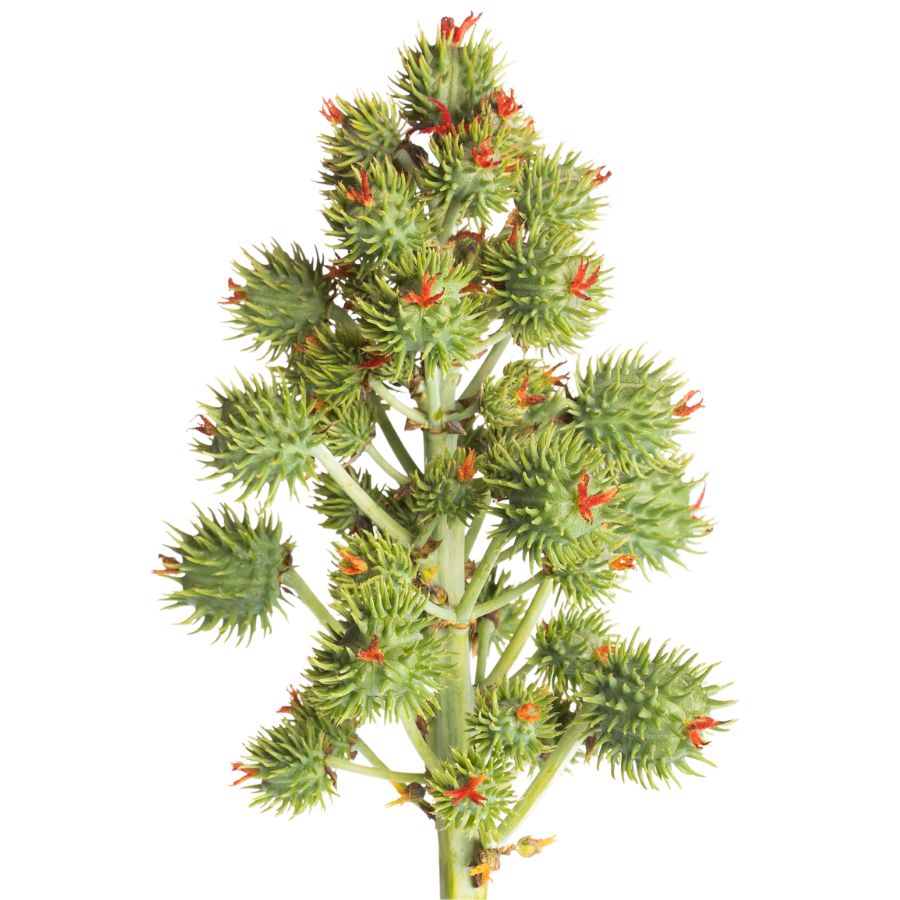
Often mistaken for: Wild rhubarb (Rumex spp. or Rheum spp.)
Castor bean is a bold plant with large, lobed leaves and tall red or green stalks, often found in gardens, along roadsides, and in disturbed areas in warmer regions in the US. Its red-tinged stems and overall size can resemble wild rhubarb to the untrained eye.
Unlike rhubarb, castor bean plants produce spiny seed pods containing glossy, mottled seeds that are extremely toxic. These seeds contain ricin, a deadly compound even in small amounts. While all parts of the plant are toxic, the seeds are especially dangerous and should never be handled or ingested.
A Quick Reminder
Before we get into the specifics about where and how to find these mushrooms, we want to be clear that before ingesting any wild mushroom, it should be identified with 100% certainty as edible by someone qualified and experienced in mushroom identification, such as a professional mycologist or an expert forager. Misidentification of mushrooms can lead to serious illness or death.
All mushrooms have the potential to cause severe adverse reactions in certain individuals, even death. If you are consuming mushrooms, it is crucial to cook them thoroughly and properly and only eat a small portion to test for personal tolerance. Some people may have allergies or sensitivities to specific mushrooms, even if they are considered safe for others.
The information provided in this article is for general informational and educational purposes only. Foraging for wild mushrooms involves inherent risks.
How to Get the Best Results Foraging
Safety should always come first when it comes to foraging. Whether you’re in a rural forest or a suburban greenbelt, knowing how to harvest wild foods properly is a key part of staying safe and respectful in the field.
Always Confirm Plant ID Before You Harvest Anything
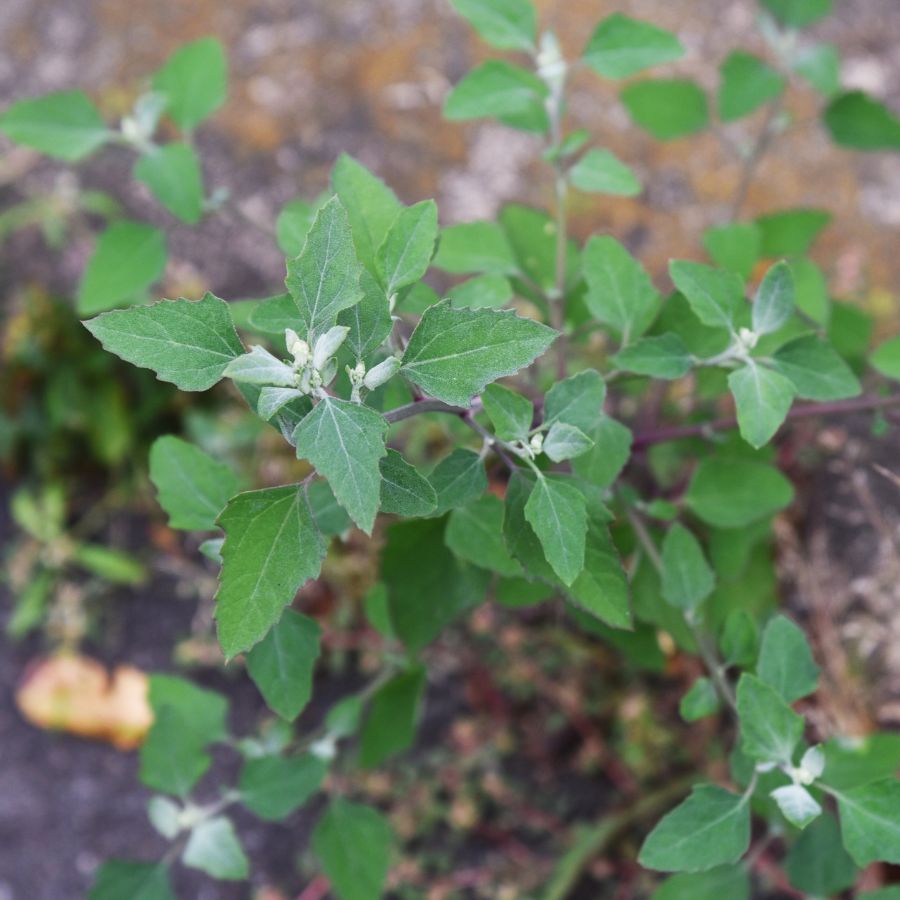
Knowing exactly what you’re picking is the most important part of safe foraging. Some edible plants have nearly identical toxic lookalikes, and a wrong guess can make you seriously sick.
Use more than one reliable source to confirm your ID, like field guides, apps, and trusted websites. Pay close attention to small details. Things like leaf shape, stem texture, and how the flowers or fruits are arranged all matter.
Not All Edible Plants Are Safe to Eat Whole
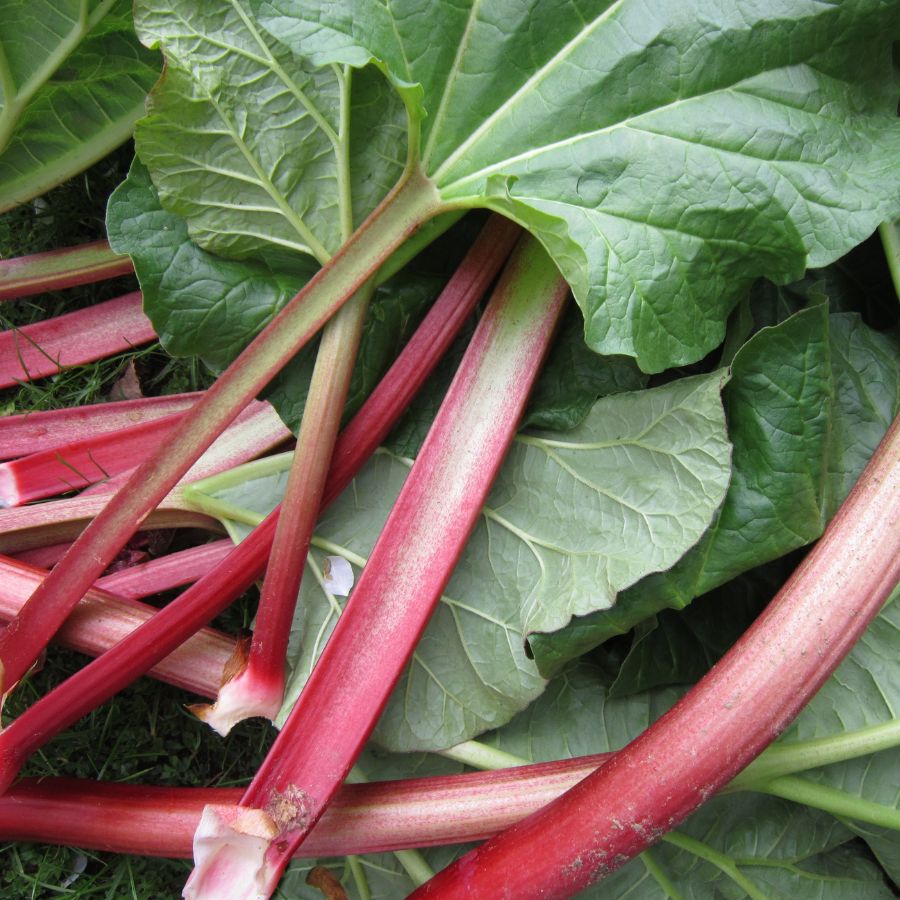
Just because a plant is edible doesn’t mean every part of it is safe. Some plants have leaves, stems, or seeds that can be toxic if eaten raw or prepared the wrong way.
For example, pokeweed is only safe when young and properly cooked, while elderberries need to be heated before eating. Rhubarb stems are fine, but the leaves are poisonous. Always look up which parts are edible and how they should be handled.
Avoid Foraging in Polluted or Contaminated Areas
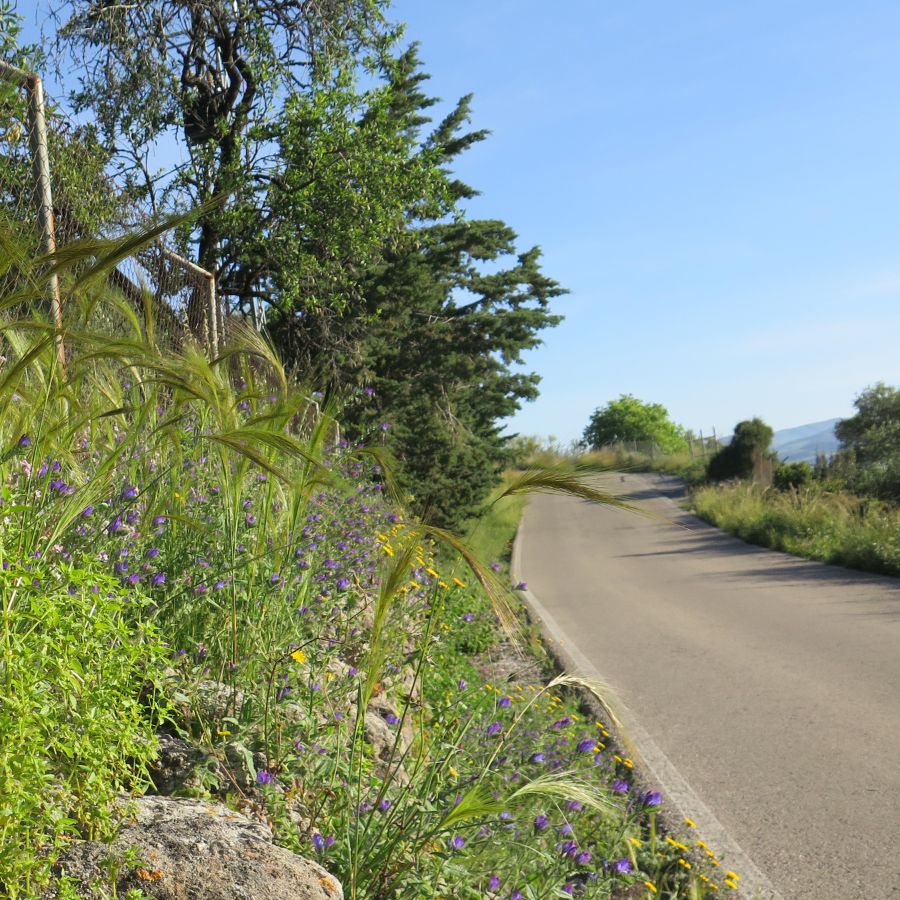
Where you forage matters just as much as what you pick. Plants growing near roads, buildings, or farmland might be coated in chemicals or growing in polluted soil.
Even safe plants can take in harmful substances from the air, water, or ground. Stick to clean, natural areas like forests, local parks that allow foraging, or your own yard when possible.
Don’t Harvest More Than What You Need
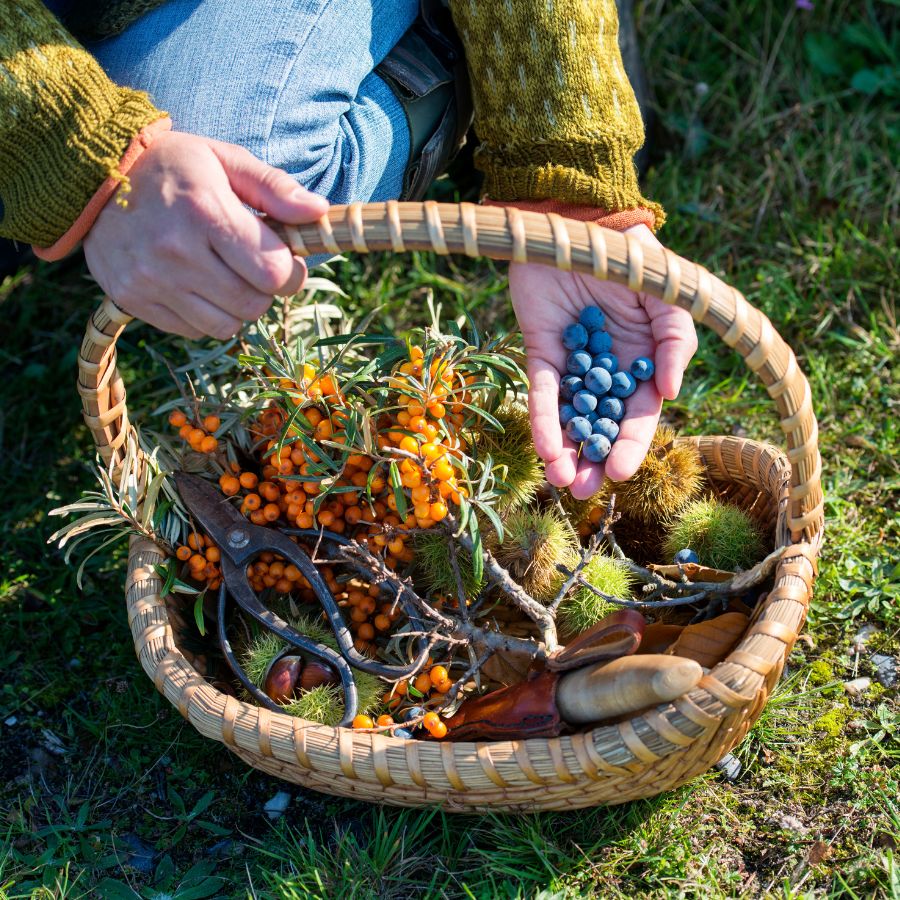
When you forage, take only what you plan to use. Overharvesting can hurt local plant populations and reduce future growth in that area.
Leaving plenty behind helps plants reproduce and supports wildlife that depends on them. It also ensures other foragers have a chance to enjoy the same resources.
Protect Yourself and Your Finds with Proper Foraging Gear

Having the right tools makes foraging easier and safer. Gloves protect your hands from irritants like stinging nettle, and a good knife or scissors lets you harvest cleanly without damaging the plant.
Use a basket or breathable bag to carry what you collect. Plastic bags hold too much moisture and can cause your greens to spoil before you get home.
This forager’s toolkit covers the essentials for any level of experience.
Watch for Allergic Reactions When Trying New Wild Foods

Even if a wild plant is safe to eat, your body might react to it in unexpected ways. It’s best to try a small amount first and wait to see how you feel.
Be extra careful with kids or anyone who has allergies. A plant that’s harmless for one person could cause a reaction in someone else.
Check Local Rules Before Foraging on Any Land
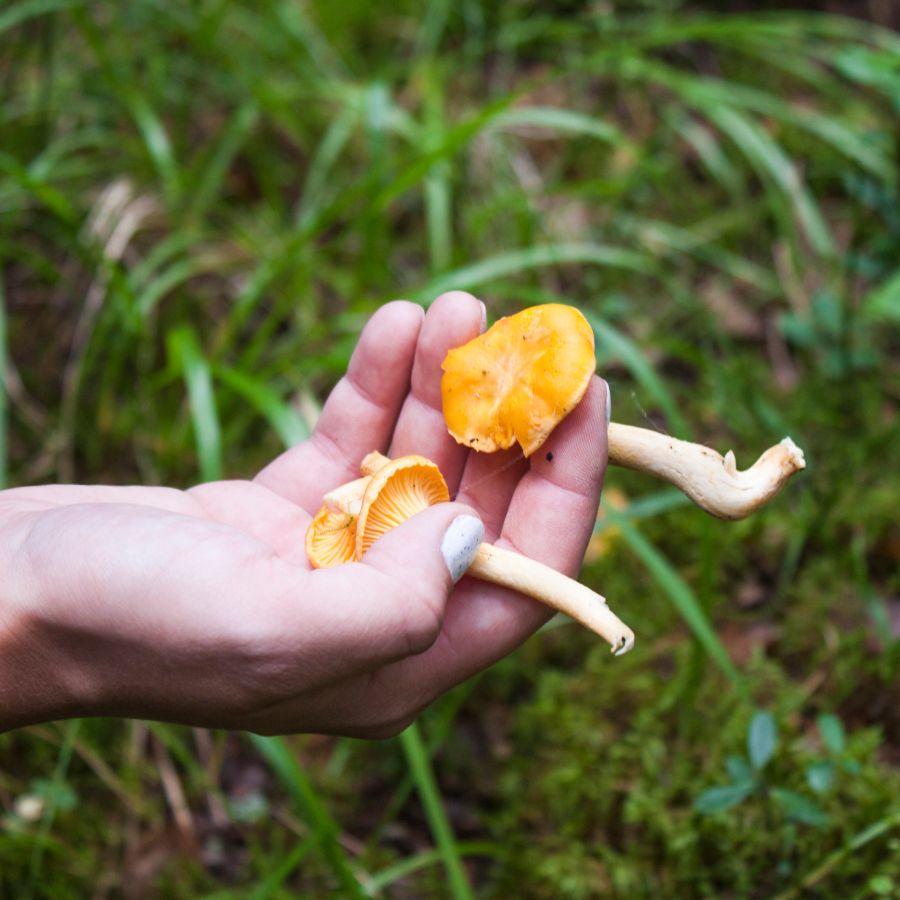
Before you start foraging, make sure you know the rules for the area you’re in. What’s allowed in one spot might be completely off-limits just a few miles away.
Some public lands permit limited foraging, while others, like national parks, usually don’t allow it at all. If you’re on private property, always get permission first.
Before you head out
Before embarking on any foraging activities, it is essential to understand and follow local laws and guidelines. Always confirm that you have permission to access any land and obtain permission from landowners if you are foraging on private property. Trespassing or foraging without permission is illegal and disrespectful.
For public lands, familiarize yourself with the foraging regulations, as some areas may restrict or prohibit the collection of mushrooms or other wild foods. These regulations and laws are frequently changing so always verify them before heading out to hunt. What we have listed below may be out of date and inaccurate as a result.
Where to Find Forageables in the State
There is a range of foraging spots where edible plants grow naturally and often in abundance:
| Plant | Locations |
| Lamb’s Quarters (Chenopodium album) | – Tallgrass Prairie National Preserve – Clinton State Park – El Dorado State Park |
| Milkweed (Asclepias syriaca) | – Konza Prairie Biological Station – Perry Wildlife Area – Marais des Cygnes National Wildlife Refuge |
| Jerusalem Artichoke (Helianthus tuberosus) | – Quivira National Wildlife Refuge – Tuttle Creek State Park – Cross Timbers State Park |
| Dandelion (Taraxacum officinale) | – Milford State Park – Cedar Bluff State Park – Prairie Spirit Trail State Park |
| Curly Dock (Rumex crispus) | – Wilson State Park – Hillsdale State Park – Cheney State Park |
| Wood Sorrel (Oxalis stricta) | – Sand Hills State Park – Kanopolis State Park – Elk City State Park |
| Stinging Nettle (Urtica dioica) | – Wyandotte County Lake Park – Big Hill Lake – Fall River State Park |
| Shepherd’s Purse (Capsella bursa-pastoris) | – Lovewell State Park – Toronto Lake Wildlife Area – Pomona State Park |
| Wild Bergamot (Monarda fistulosa) | – Prairie Center Nature Preserve – Cimarron National Grassland – Flint Hills National Wildlife Refuge |
| American Plum (Prunus americana) | – Meade State Park – Glen Elder State Park – Webster State Park |
| Ground Cherry (Physalis longifolia) | – Cedar Bluff Reservoir – El Dorado Wildlife Area – Wilson Wildlife Area |
| Chickweed (Stellaria media) | – Perry State Park – Pomona Wildlife Area – Hillsdale Wildlife Area |
| Red Clover (Trifolium pratense) | – Clinton Wildlife Area – Tuttle Creek Wildlife Area – Milford Wildlife Area |
| White Clover (Trifolium repens) | – Cheney Wildlife Area – Elk City Wildlife Area – Toronto Wildlife Area |
| Eastern Redbud (Cercis canadensis) | – Cross Timbers State Park – Elk City State Park – Fall River State Park |
| Redroot Pigweed (Amaranthus retroflexus) | – Kanopolis State Park – Sand Hills State Park – Wilson State Park |
| Goosefoot (Chenopodium berlandieri) | – Marais des Cygnes Wildlife Area – Perry Wildlife Area – Hillsdale Wildlife Area |
| Wild Grape (Vitis riparia) | – Tuttle Creek State Park – Milford State Park – El Dorado State Park |
| Hackberry (Celtis occidentalis) | – Cimarron National Grassland – Flint Hills National Wildlife Refuge – Quivira National Wildlife Refuge |
| Black Walnut (Juglans nigra) | – Perry State Park – Pomona State Park – Clinton State Park |
| American Persimmon (Diospyros virginiana) | – Cross Timbers State Park – Elk City State Park – Crawford State Park |
| Garlic Mustard (Alliaria petiolata) | – Mt. Zion area, Pottawatomie County – Forested creek banks in Riley County – Shaded floodplains near Wakarusa River |
| Salsify (Tragopogon dubius) | – Smoky Valley Ranch – Cimarron National Grassland – Cheyenne Bottoms Wildlife Area |
| Smartweed (Persicaria pensylvanica) | – Marais des Cygnes Wildlife Area – Neosho Wildlife Area – Big Hill Lake |
| Common Blue Violet (Viola sororia) | – Prairie Center Nature Preserve – Tuttle Creek State Park – Hollister Wildlife Area |
| Prairie Prickly Pear Cactus (Opuntia macrorhiza) | – Cimarron National Grassland – Wilson Wildlife Area – Kanopolis State Park |
| Wild Prairie Rose (Rosa arkansana) | – Konza Prairie Biological Station – Tallgrass Prairie National Preserve – Smoky Hill Wildlife Area |
| Riverbank Grape (Vitis vulpina) | – Perry State Park – Elk City State Park – Fall River State Park |
| Sunflower (Helianthus annuus) | – Cheyenne Bottoms Wildlife Area – Quivira National Wildlife Refuge – Smoky Hill Wildlife Area |
| Meadow Garlic (Allium canadense) | – Cross Timbers State Park – Elk City State Park – Crawford State Park |
| Wild Garlic (Allium vineale) | – Tuttle Creek State Park – Milford State Park – Perry State Park |
| Wild Carrot (Daucus carota) | – Tallgrass Prairie National Preserve – Wilson State Park – Cimarron National Grassland |
| New Jersey Tea (Ceanothus americanus) | – Konza Prairie Biological Station – Flint Hills National Wildlife Refuge – Cross Timbers State Park |
| Field Pennycress (Thlaspi arvense) | – Cheyenne Bottoms Wildlife Area – Marais des Cygnes Wildlife Area – Cimarron National Grassland |
| Honey Locust (Gleditsia triacanthos) | – Elk City State Park – Cross Timbers State Park – Crawford State Park |
| Mulberry (Morus rubra) | – Perry State Park – Milford State Park – Tuttle Creek State Park |
| Crabapple (Malus ioensis) | – Tallgrass Prairie National Preserve – Konza Prairie Biological Station – Flint Hills National Wildlife Refuge |
Peak Foraging Seasons
Different edible plants grow at different times of year, depending on the season and weather. Timing your search makes all the difference.
Spring
Spring brings a fresh wave of wild edible plants as the ground thaws and new growth begins:
| Plant | Months | Best Weather Conditions |
| Eastern Redbud (Cercis canadensis) | March – April | Warm afternoons following cool mornings |
| Chickweed (Stellaria media) | March – May | Cool, moist ground, after light rain |
| Curly Dock (Rumex crispus) | March – May | Damp soil, mild temperatures under 70°F |
| Dandelion (Taraxacum officinale) | March – May | Sunny or lightly overcast days after rain |
| Shepherd’s Purse (Capsella bursa-pastoris) | March – May | Moist, loose soil with steady cool temps |
| Stinging Nettle (Urtica dioica) | March – May | Cloudy or rainy days with high soil moisture |
| Garlic Mustard (Alliaria petiolata) | March – May | Cool, moist soil in shaded woodlands after spring rain |
| Common Blue Violet (Viola sororia) | March – May | Damp, rich soils under partial shade during cool spells |
| Wild Garlic (Allium vineale) | March – May | Slightly overcast days with soft, wet soil for easy harvesting |
| Field Pennycress (Thlaspi arvense) | March – May | Cool mornings, moderate rainfall, open disturbed ground |
| Lamb’s Quarters (Chenopodium album) | April – June | Sunny days with damp soil from recent rain |
| Milkweed (Asclepias syriaca) | April – May (young shoots) | Sunny with moist soil, shortly after spring showers |
| Wood Sorrel (Oxalis stricta) | April – May | Partial shade, after morning dew or light rain |
| Red Clover (Trifolium pratense) | April – May | Mild, humid weather with steady sun |
| White Clover (Trifolium repens) | April – May | Cool mornings, sunny afternoons, moist soil |
| Meadow Garlic (Allium canadense) | April – May | Sunny to partly cloudy days with moist ground conditions |
| Wild Carrot (Daucus carota) | April – May (young leaves/roots) | Mild weather with well-drained soils, early morning harvest |
| New Jersey Tea (Ceanothus americanus) | April – May (young leaves) | Dry hillsides or prairies in mild, sunny conditions |
Summer
Summer is a peak season for foraging, with fruits, flowers, and greens growing in full force:
| Plant | Months | Best Weather Conditions |
| Meadow Garlic (Allium canadense) | June | Clear days following mild rain, soft soils |
| Lamb’s Quarters (Chenopodium album) | June – August | Hot, dry conditions; early morning harvest ideal |
| Wild Bergamot (Monarda fistulosa) | June – August | Warm, dry days with low wind |
| Goosefoot (Chenopodium berlandieri) | June – August | Warm, dry weather; early morning dew helpful |
| Wood Sorrel (Oxalis stricta) | June – August | Partial shade with light morning dew |
| Red Clover (Trifolium pratense) | June – August | Sunny and slightly humid with good soil moisture |
| White Clover (Trifolium repens) | June – August | Damp soil, mild mornings and warm afternoons |
| Prairie Prickly Pear Cactus (Opuntia macrorhiza) | June – August | Hot, dry conditions on rocky or sandy soils |
| Smartweed (Persicaria pensylvanica) | June – August | Warm, humid environments near wetlands or streambanks |
| Wild Carrot (Daucus carota) | June – August (flowering tops) | Sunny days, well-drained fields or roadsides |
| Milkweed (Asclepias syriaca) | June – July (immature pods) | Warm days after rainfall, full sun |
| American Plum (Prunus americana) | June – July | Sunny days with moderate humidity |
| Wild Prairie Rose (Rosa arkansana) | June – July | Warm mornings after light rain, full sun exposure |
| Mulberry (Morus rubra) | June – July | Warm, still mornings after a dry evening for ripe fruit |
| Crabapple (Malus ioensis) | July (immature fruits) | Mild to warm days in sunny, open woodlands or field margins |
| Wild Grape (Vitis riparia) | July – August | Hot days, slightly humid, near water sources |
| Redroot Pigweed (Amaranthus retroflexus) | July – August | Hot, sunny weather with dry soil |
| Ground Cherry (Physalis longifolia) | July – August | Hot, dry days with brief rainfall breaks |
| Riverbank Grape (Vitis vulpina) | July – August | Hot days with some humidity; best near rivers and forest edges |
| Sunflower (Helianthus annuus) | July – August | Dry, sunny weather with well-drained soils |
Fall
As temperatures drop, many edible plants shift underground or produce their last harvests:
| Plant | Months | Best Weather Conditions |
| Field Pennycress (Thlaspi arvense) | September (fall regrowth) | Moist soil after rainfall and mild daytime temperatures |
| Riverbank Grape (Vitis vulpina) | September | Cool evenings with full sun, ideal for late ripening fruit |
| Sunflower (Helianthus annuus) | September – October (seeds) | Dry conditions with wind to loosen mature seed heads |
| Black Walnut (Juglans nigra) | September – October | Dry, sunny days; harvest after walnuts fall naturally |
| Wild Grape (Vitis riparia) | September – October | Warm days, cool nights for ripening fruit |
| Hackberry (Celtis occidentalis) | September – October | Dry weather with recent wind to shake ripe berries |
| Ground Cherry (Physalis longifolia) | September – October | Warm afternoons with dry conditions |
| Dandelion (Taraxacum officinale) | September – October | Moist soil, cool air, after early fall rains |
| Curly Dock (Rumex crispus) | September – October | Cool, damp soil with fading summer heat |
| Chickweed (Stellaria media) | September – October | Cool, overcast days with moist conditions |
| Honey Locust (Gleditsia triacanthos) | September – October | Crisp fall days; dry and sunny with open canopy light |
| Crabapple (Malus ioensis) | September – October | Chilly mornings and sunny afternoons for sweetening fruit |
| Jerusalem Artichoke (Helianthus tuberosus) | September – November | Cool, dry days after frost for best root quality |
| American Persimmon (Diospyros virginiana) | September – November | Cool nights and warm days after the first light frost |
| Salsify (Tragopogon dubius) | September – November (roots) | Cool weather, dry soils after late summer die-back |
Winter
Winter foraging is limited but still possible, with hardy plants and preserved growth holding on through the cold:
| Plant | Months | Best Weather Conditions |
| Chickweed (Stellaria media) | December – February | Mild winter days, moist soil, low wind |
| Shepherd’s Purse (Capsella bursa-pastoris) | December – February | Overcast skies, cool and wet ground |
| Dandelion (Taraxacum officinale) | December – February (greens in warm spells) | Sunny periods during warm winter thaws |
| Curly Dock (Rumex crispus) | December – February | Cold-hardy shoots during thaw periods |
| Salsify (Tragopogon dubius) | December – February (overwintered roots) | Cold but unfrozen ground, dig on sunny midday after thaw |
| Garlic Mustard (Alliaria petiolata) | December – February (rosettes) | Mild winter days with moist soil in shaded woods |
| Field Pennycress (Thlaspi arvense) | December – February (young rosettes) | Overcast or sunny days above freezing, soft soil |
| Wood Sorrel (Oxalis stricta) | February | Late winter thaw, sunny edge of woodlands |
| Wild Garlic (Allium vineale) | February | Early thaw, wet soil and bright but cool mornings |
One Final Disclaimer
The information provided in this article is for general informational and educational purposes only. Foraging for wild plants and mushrooms involves inherent risks. Some wild plants and mushrooms are toxic and can be easily mistaken for edible varieties.
Before ingesting anything, it should be identified with 100% certainty as edible by someone qualified and experienced in mushroom and plant identification, such as a professional mycologist or an expert forager. Misidentification can lead to serious illness or death.
All mushrooms and plants have the potential to cause severe adverse reactions in certain individuals, even death. If you are consuming foraged items, it is crucial to cook them thoroughly and properly and only eat a small portion to test for personal tolerance. Some people may have allergies or sensitivities to specific mushrooms and plants, even if they are considered safe for others.
Foraged items should always be fully cooked with proper instructions to ensure they are safe to eat. Many wild mushrooms and plants contain toxins and compounds that can be harmful if ingested.

